25 ingredients you should NEVER throw away
Use it or lose it
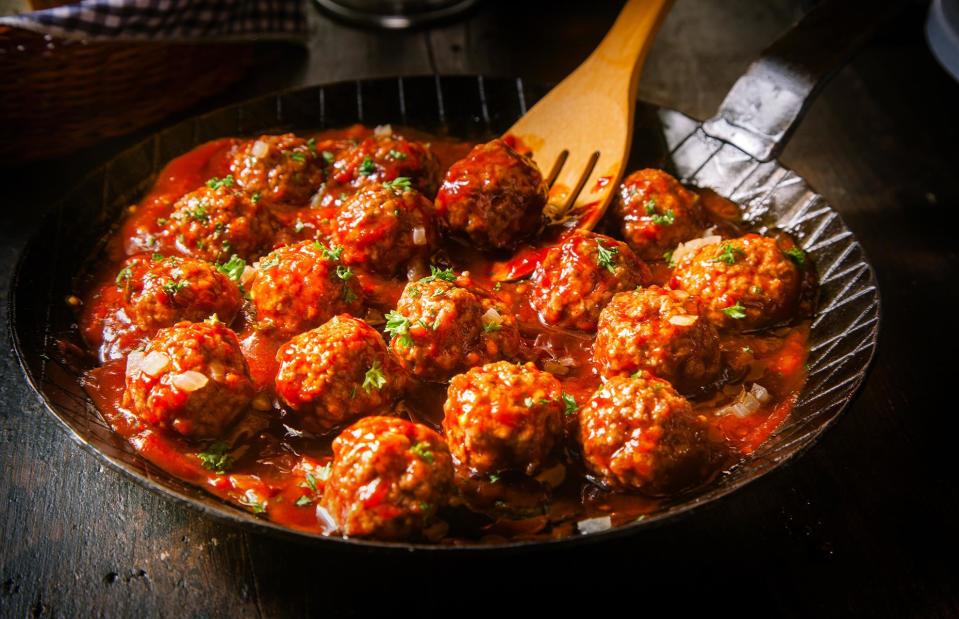
stockcreations/Shutterstock
No matter how good you are at planning or portion control, it seems that ending up with leftovers, an excess of a certain food or forgotten ingredients that need a little something extra to bring them back to their best is somehow inevitable. From snacks and soups to main meals and tasty desserts, these simple recipes and ideas will transform foods you’d usually throw away into something new and delicious.
Read on to discover the dishes you can whip up with ingredients we usually throw away, from apples to watercress.
Apples
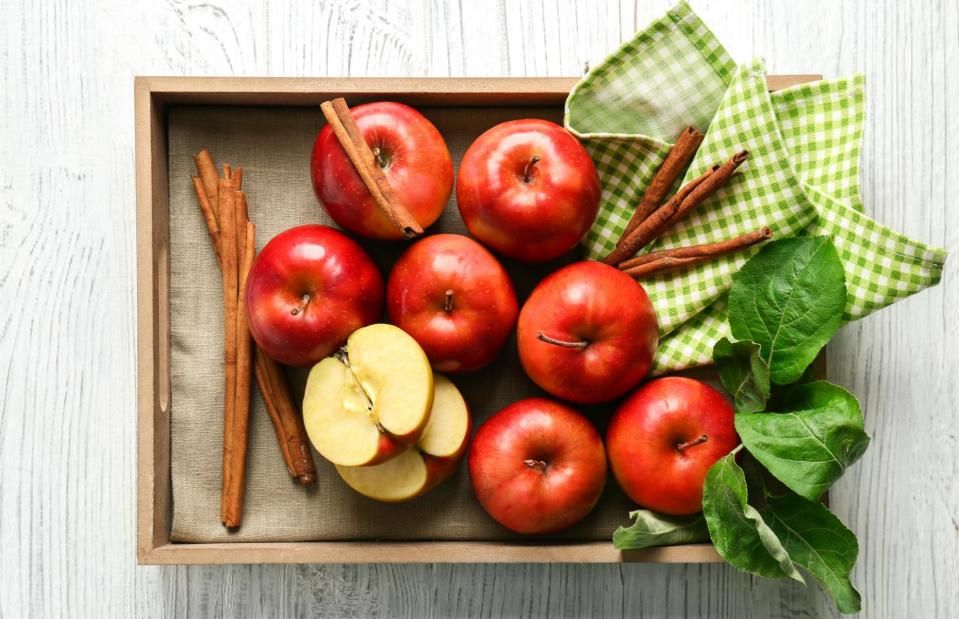
Africa Studio/Shutterstock
How many times have you been faced with apples that have accidentally been left to go soft in the fruit bowl? Overripe apples tend to have a dry, mealy texture, so are no good for eating fresh, but there are plenty of ways to use them in cooked dishes. Just take care to remove any black, pitted or mouldy parts first.
Apples
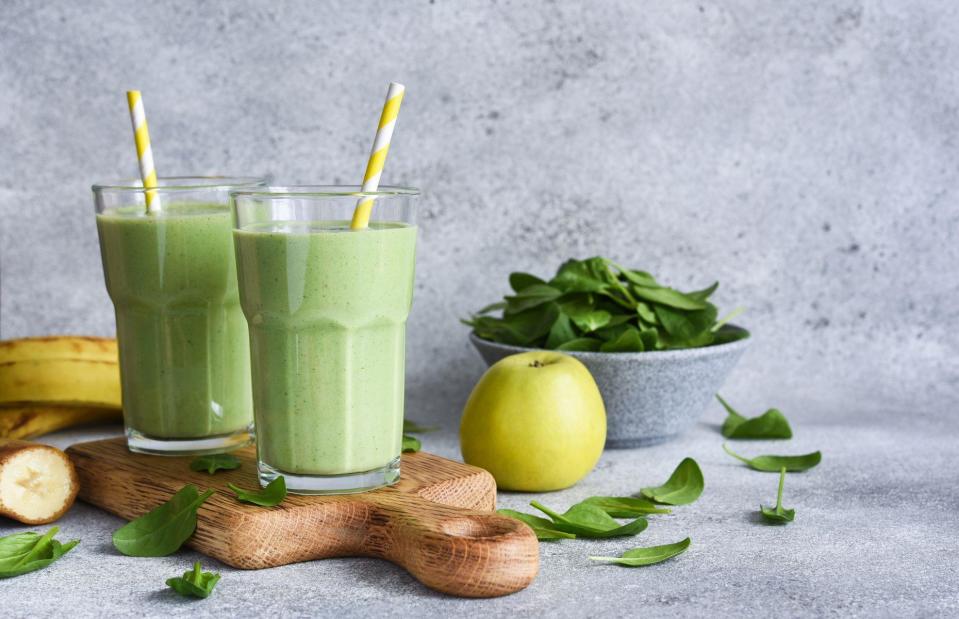
zefirchik06/Shutterstock
You can rescue apples on the turn by transforming them into a smooth apple sauce or slow-cooking them with spices to create rich apple butter. Alternatively, make a tangy chutney or try baking with them (think moist muffins and flavourful pies). You can also blend apples into creamy smoothies or juices: for the ultimate morning health kick, blitz banana, avocado, apple chunks, spinach and coconut water together, adding fresh lime juice to taste if you like.
Apples
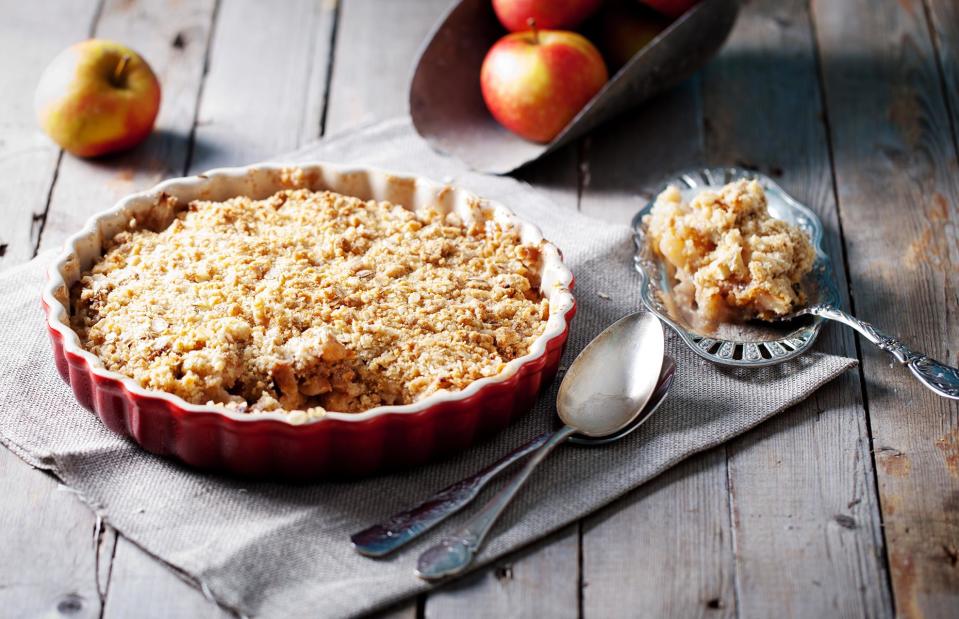
Anna_Pustynnikova/Shutterstock
And who doesn’t love a crumble? This satisfying mix of tender, baked apples and a crisp, sugary topping is traditionally a slow-cooked affair. But if you're desperate to use up fading fruit, you can make it in the microwave. For a quick and easy apple crumble, peel and slice an apple and layer it into a microwave-safe bowl. In a separate bowl, mix a tablespoon each of plain flour, oats, brown sugar and melted butter. Spoon over the apple slices and microwave on high for three to four minutes. Serve with a big scoop of vanilla ice cream.
Avocado
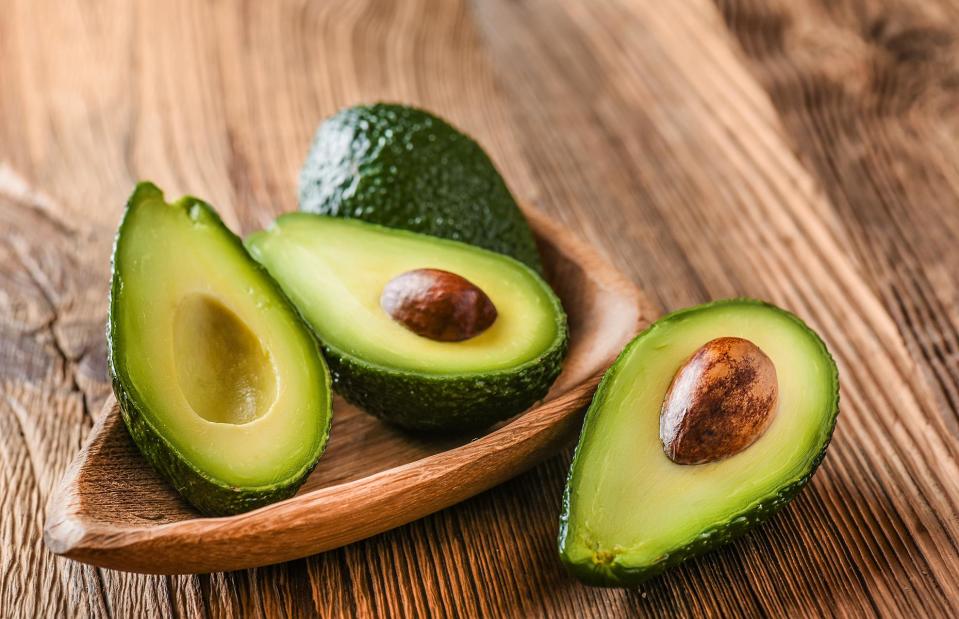
Krasula/Shutterstock
These tasty fruits may be wildly popular, but they’re notoriously tricky to eat at their best. We’ve all spent ages patiently waiting for an avocado to ripen at home, only for it to turn brown and mushy almost overnight. Although it won't look great sliced on toast anymore, there are plenty of ways to rescue a slightly overripe avocado.
Avocado
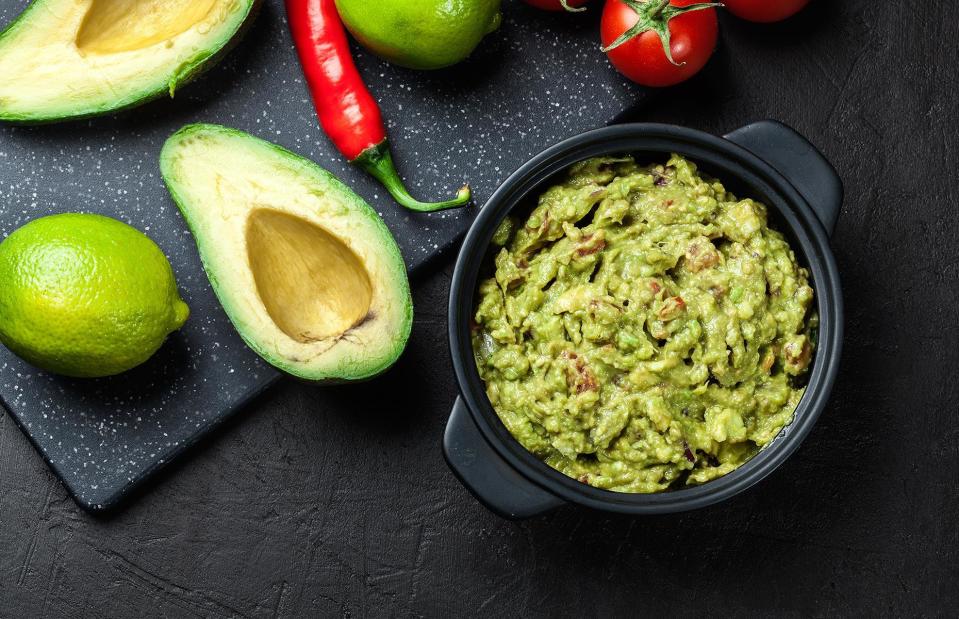
Slawomir Fajer/Shutterstock
Although you ideally want to use perfectly ripe avocados in your guacamole, the creamy, zesty dip still works well with avos that are past their peak. To make, combine roughly mashed avocados with chopped red onion, red chillies, fresh coriander, a touch of black pepper and lime juice. If all else fails, avocado is always a winner blended into a smoothie with fresh fruit and yoghurt.
Bananas
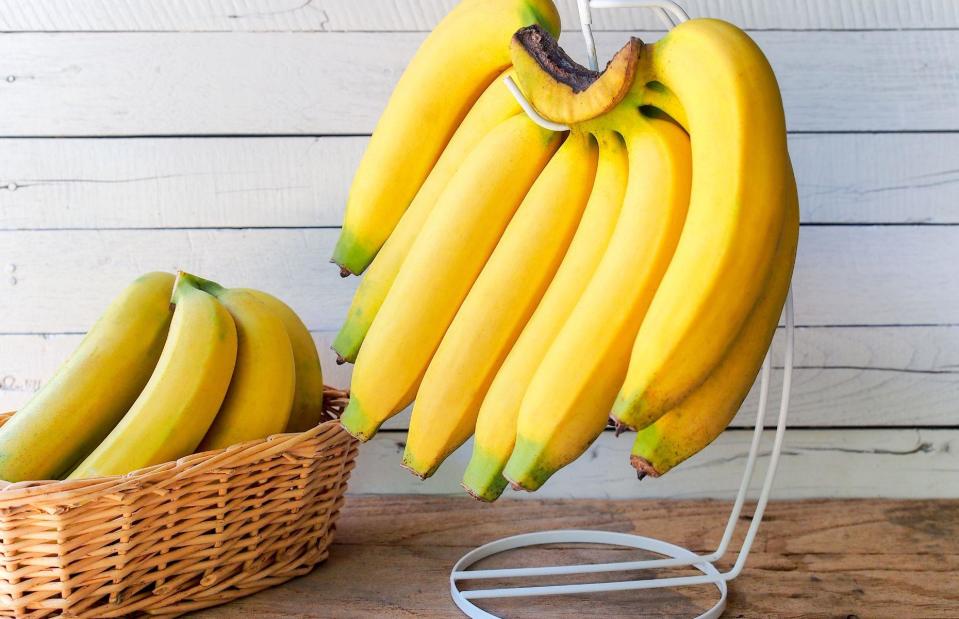
pada smith stockphoto/Shutterstock
When they’re fresh as a button, bananas are great for snacking on as is. But once they’re slightly on the turn, their appeal can begin to wane. Brown spots and an over-soft texture mean they’re past their peak, but still fine to use. If your bananas are black all over or are starting to smell a little funky, they belong on the compost pile.
Bananas
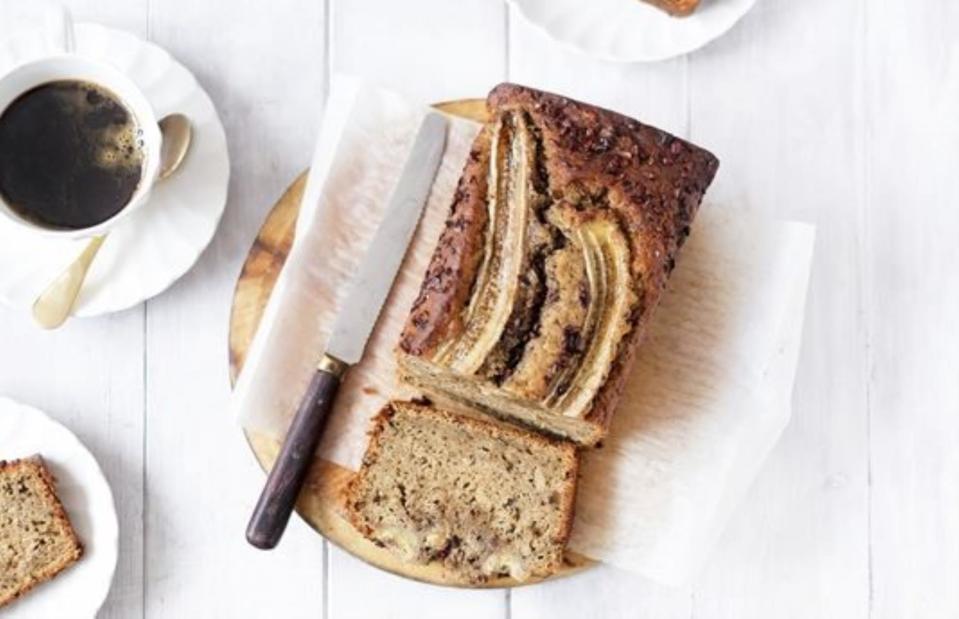
Edd Kimber/loveFOOD
Desserts are a great way to use up overripe fruits. The softness is masked by sugar, flour and other ingredients, and in some cases, helps bind the mixture together. Banana bread is a classic crowd-pleasing bake and once you’ve got your basic recipe down, there are so many ways to add extra fun and flavour – think fresh berries, spices and nut butter. Or how about adding chocolate chips and a shot of espresso for an indulgent cake with a grown-up edge?
Berries
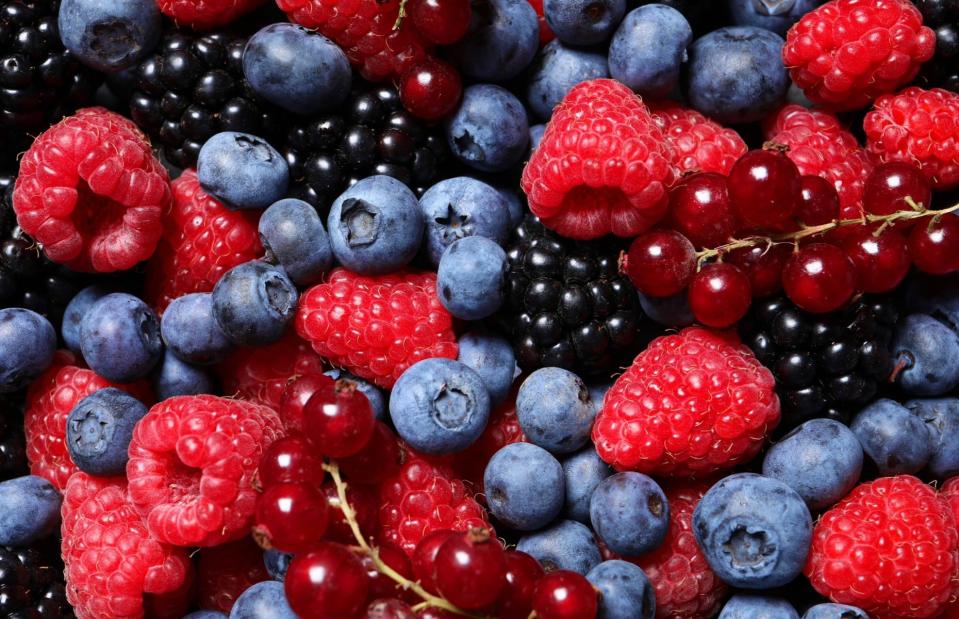
New Africa/Shutterstock
When it comes to fresh berries, the clock is ticking from the moment they're picked. Most lose their texture fairly rapidly, particularly soft and delicate blueberries, strawberries and raspberries. They can still be used in bakes, cakes, jams and jellies though – just discard any with mould or a funky whiff.
Berries
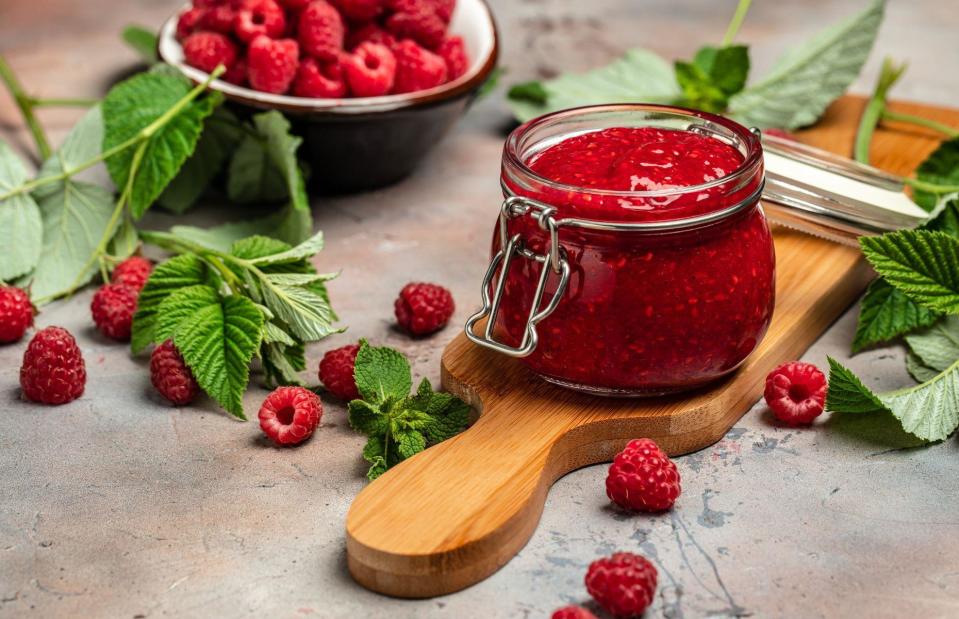
sweet marshmallow/Shutterstock
Bring your soft fruit back to life with the judicious use of sugar. To make a simple jam, combine 16oz (450g) mixed berries, 8oz sugar (225g) and 1 tsp lemon juice in a saucepan. Simmer over medium heat, mashing the berries as they cook, until thickened, which should take about 20 minutes. Remove from the heat and allow to cool. Pour the jam into sterilised jars, seal and store in the fridge until you're ready to enjoy (jarred jams, when sterilised and stored correctly, will keep for months).
Bread
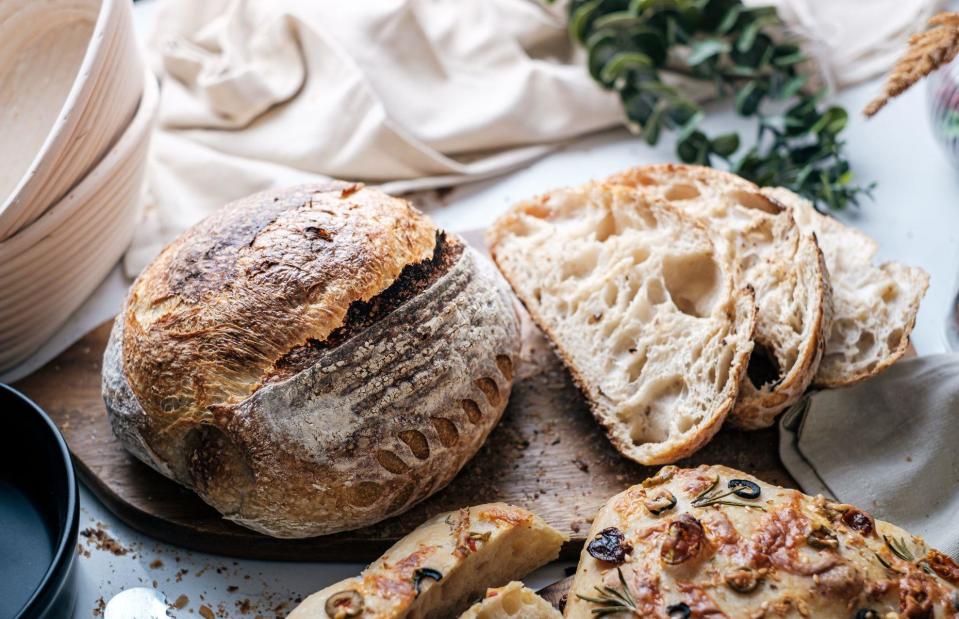
Tawan Ramtang/Shutterstock
Bread is high up on the list of the most frequently wasted foods. Whether we’re talking about sliced white or an artisan loaf, it’s always a shame when once fluffy bread turns dry and stale. That said, unless your bread is showing signs of mould, there are plenty of ways it can be put to good use – in fact, some recipes even work better with bread that’s not fresh from the oven.
Bread
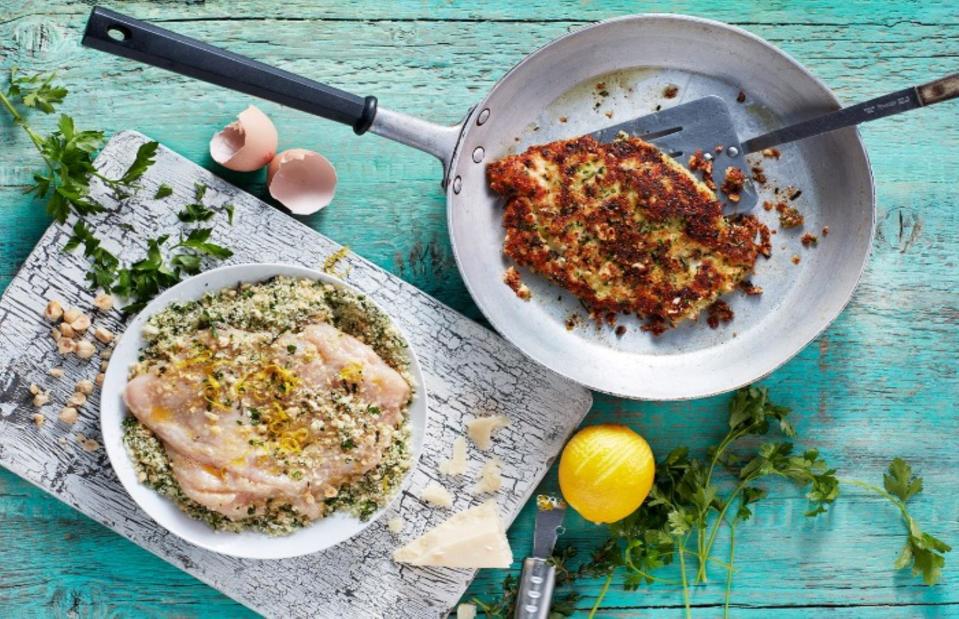
Too Good To Waste/Watkins Media
One of the easiest ways to use up stale bread is to make breadcrumbs. Simply blitz your bread to crumbs in a blender (or chop by hand if you don’t mind them a bit chunky), transfer to a sealable plastic bag and freeze for up to three months. Use to finish garlicky, breadcrumb-topped stuffed mushrooms, coat meat or fish before cooking, or make a delicious pangrattato topping for pasta by frying breadcrumbs in olive oil, garlic and fresh herbs, until golden and crunchy.
Bread

The French Revolution/Seven Dials
French toast is one of those dishes that's actually better made with stale rather than fresh bread, as it's more robust and soaks up more of the eggy mixture. There’s no need to just stick to plain white sliced either – mix things up by making your French toast with sourdough, brioche or challah bread. The dish works brilliantly with stale crumpets or even croissants too.
Broad bean pods
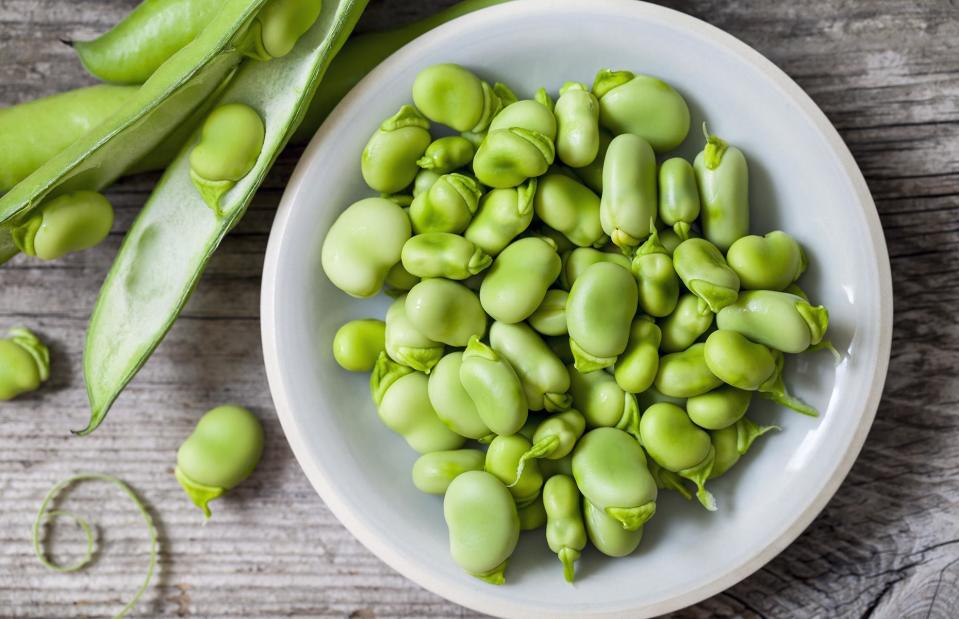
Magdanatka/Shutterstock
When preparing broad beans, all too often the waxy pods get thrown away without a second thought, which is a real shame because they’ve got plenty of flavour. To save them from the bin, we've got a delicious idea for what you could do with them next time...
Broad bean pods
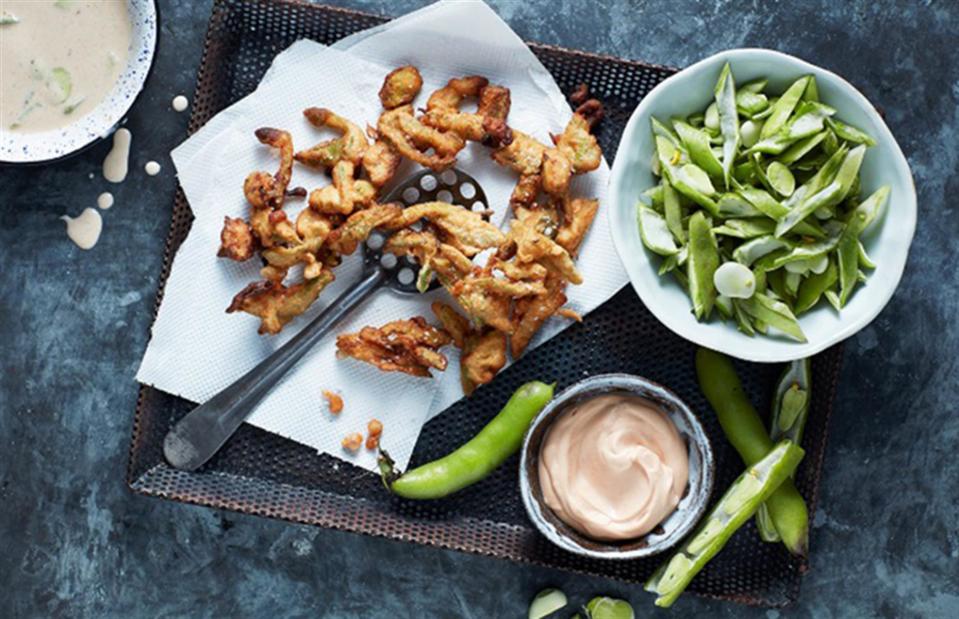
Too Good To Waste/Watkins Media
With plenty of satisfying crunch, broad bean pod fritters are the perfect snack. To make them, simply dip the pods in batter (a light tempura batter works well), then deep fry in vegetable oil until perfectly crisp and golden brown. They're great served with a garlicky aioli or spicy sriracha mayo to cut through the richness. You could also do the same thing with limp green beans or mangetout.
Broccoli
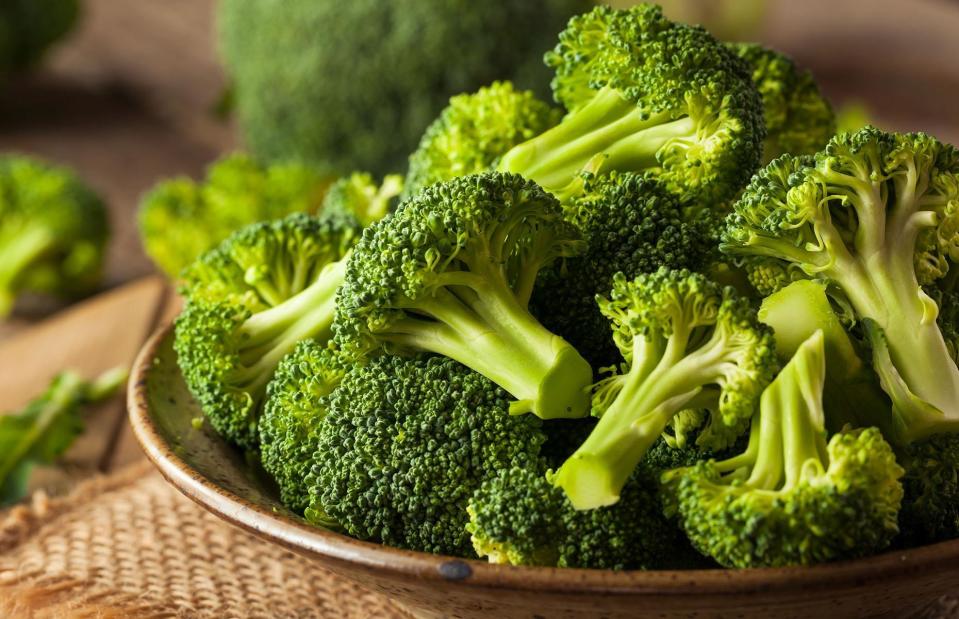
Brent Hofacker/Shutterstock
Broccoli and other brassicas are so packed with nutrients, it’s a shame to waste any part of the vegetable. But once broccoli starts changing colour and the individual florets lose their firmness, it's not the most visually appealing ingredient. Don't throw your broccoli away though; as long as there's no mould on it, it's still absolutely fine to eat.
Broccoli
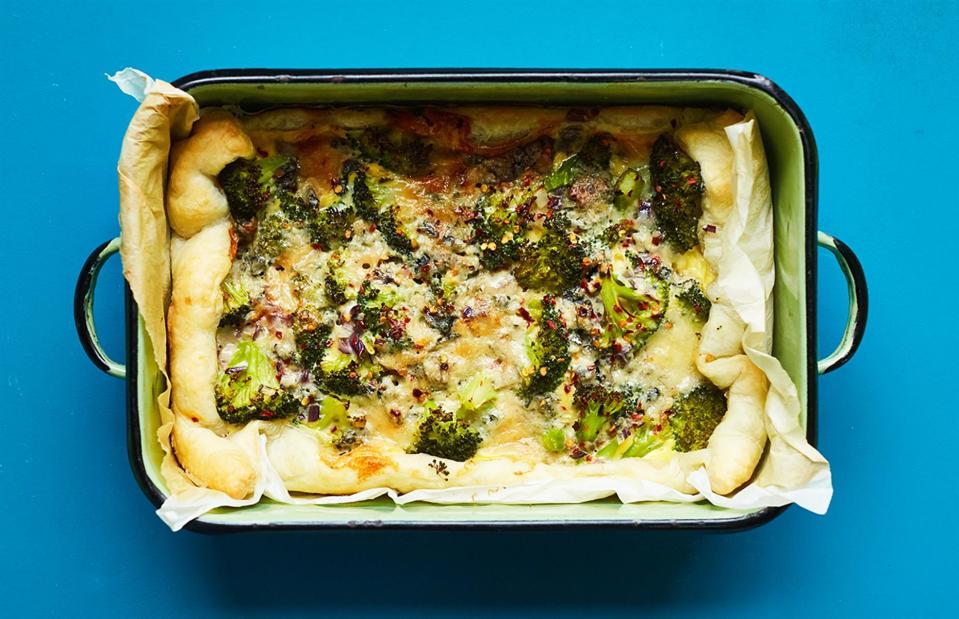
The Green Roasting Tin/Square Peg
A good way to hide unappealing-looking broccoli is to incorporate it into tarts, frittatas, omelettes and quiches – it works particularly well with salmon, bacon or punchy cheeses like Gorgonzola and mature Cheddar. If your broccoli is looking particularly limp, blend chopped florets with stock, potatoes, cream and blue cheese to make a warming soup. And if you have long-stem broccoli that’s seen better days, try griddling it until slightly charred, then use to top homemade pizza.
Cabbage and Brussels sprouts
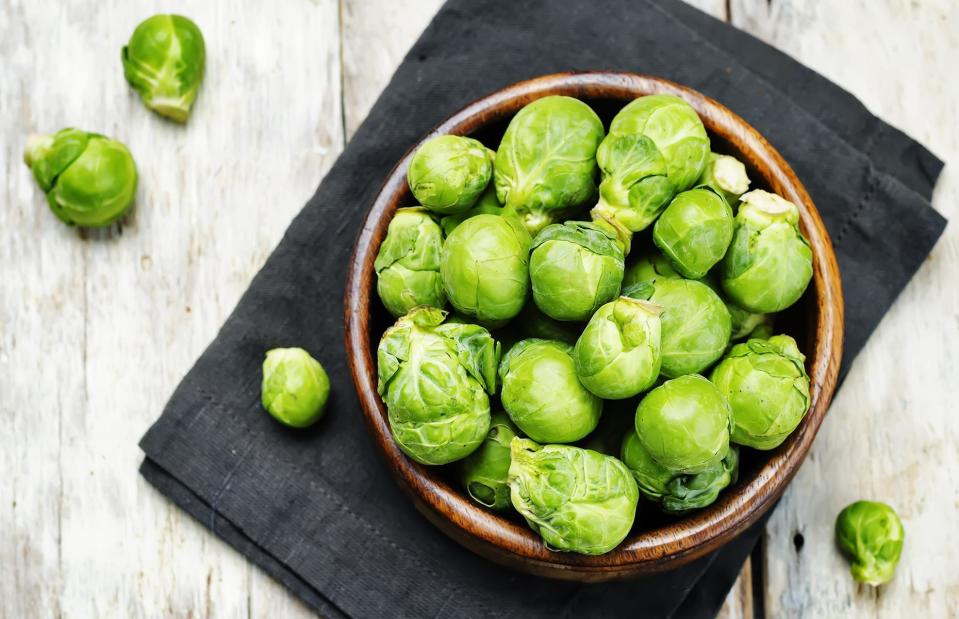
Nataliya Arzamasova/Shutterstock
If you discover a pile of sprouts or half a cabbage hidden away at the back of the fridge, worry not - these veggies are notoriously hardy, so tend to stay in good shape for a while. And as long as they haven't gone soft, slimy or mouldy, they're still fine to use.
Cabbage and Brussels sprouts
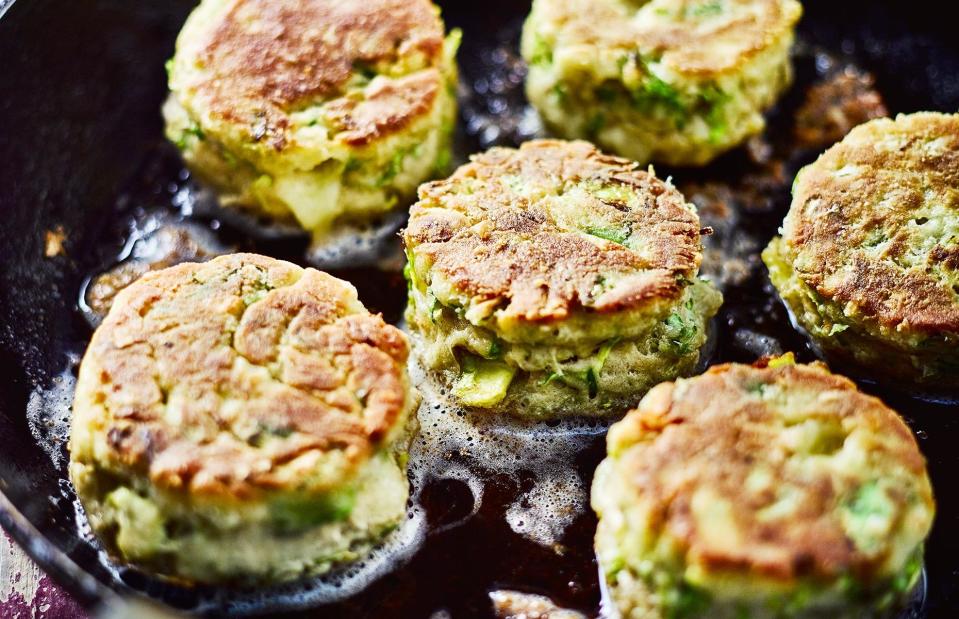
Cooking on a Bootstrap/Bluebird
For an easy side dish, slice and sauté your leftover greens (think sprouts, kale and spring onions) in a pan with olive oil, garlic and plenty of seasoning. They’re also great for adding a bit of extra nutrients to soups, stir-fries or pasta dishes. For something a bit more creative, why not bake with your extra greens? Sliced Brussels sprouts make an excellent addition to cheesy scones, but you could also use spinach or spring greens to flavour the dough.
Carrots
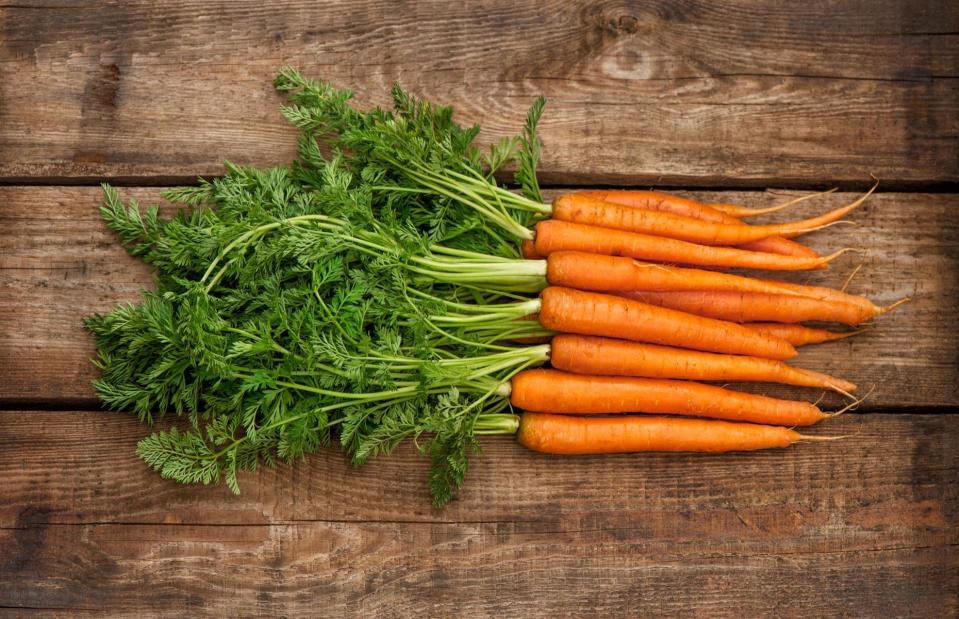
LiliGraphie/Shutterstock
It's likely we've all got a couple of these robust root veggies lurking in the back of the fridge or in the veg basket. While carrots are one of the toughest vegetables, even they can lose their shine after a while. If your carrots have dried out or gone soft and a bit bendy, they can still form the base of a delicious dish, so don't discard them unless they've actually gone mouldy.
Carrots
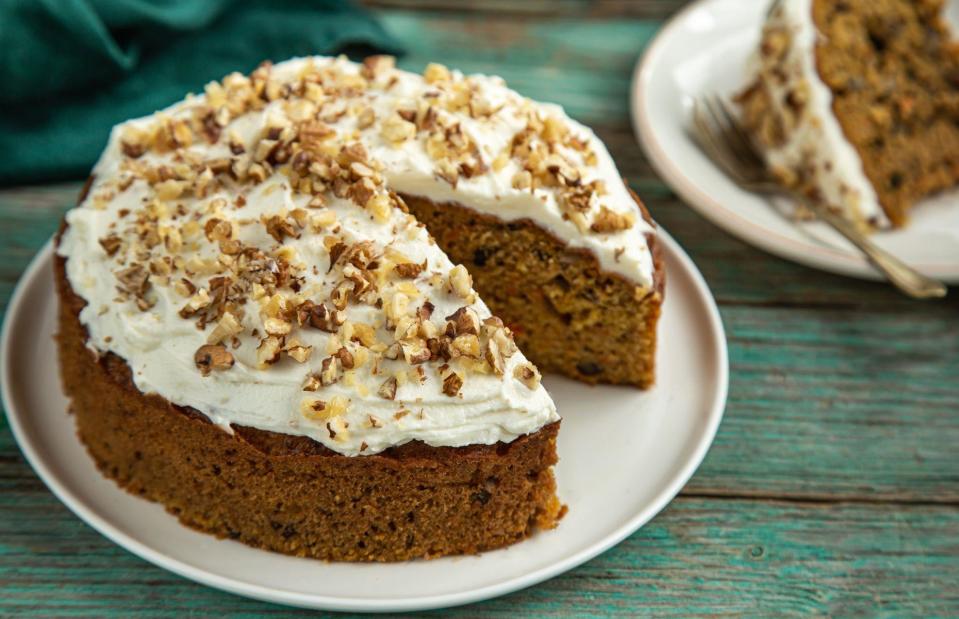
Anna Shepulova/Shutterstock
Bring these beauties back to their best by grating them into a cake mix. With a rich cream cheese frosting and crunchy walnut pieces, this simple recipe is one of our favourites. To make it, combine 8oz (225g) grated carrot, 6oz (170g) sugar, 4fl oz (114ml) vegetable oil, two beaten eggs and 1 tsp vanilla extract. Mix in 8oz (225g) plain flour, 1/2 tsp each of baking powder, baking soda and cinnamon, plus a pinch of salt. Bake in a greased cake tin at 180°C/fan 160°C/350°F/gas mark 4 for 30-35 minutes. Allow to cool, then top with cream cheese icing and walnuts.
Cheese
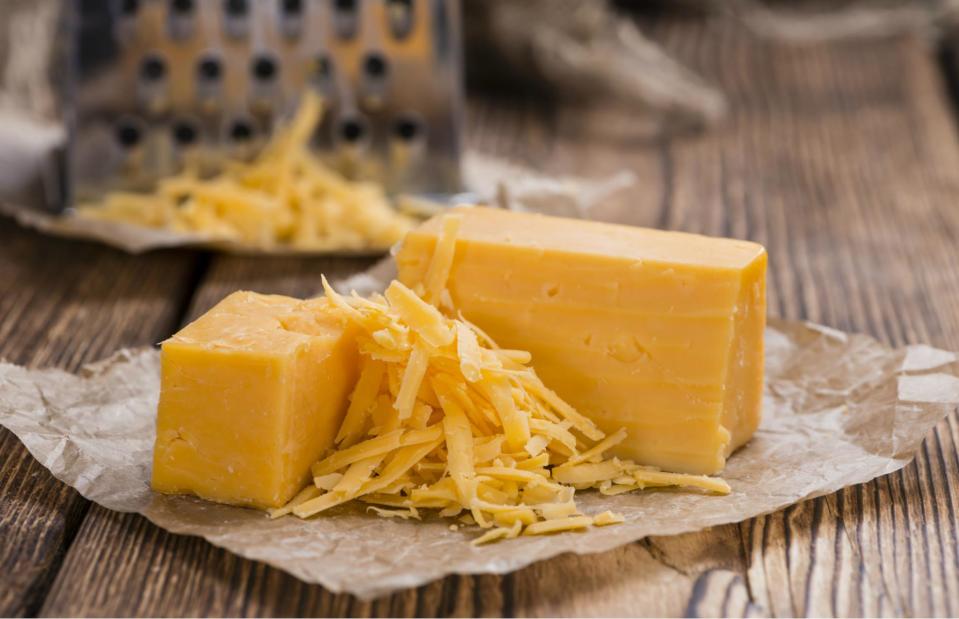
HandmadePictures/Shutterstock
Whether we're talking about a hunk of Cheddar that's dried out in the fridge or a wedge of brie rapidly turning overripe, these cheeses still have life in them. Old cheese generally isn’t harmful, but unless you're using blue cheese, be sure to slice off any parts showing signs of mould. Remember that hard cheeses like Cheddar freeze very well; just pack into a resealable plastic bag with as much air removed as possible. However, if you’re keen to use it straight away, there are plenty of tasty options for an excess of cheese.
Cheese
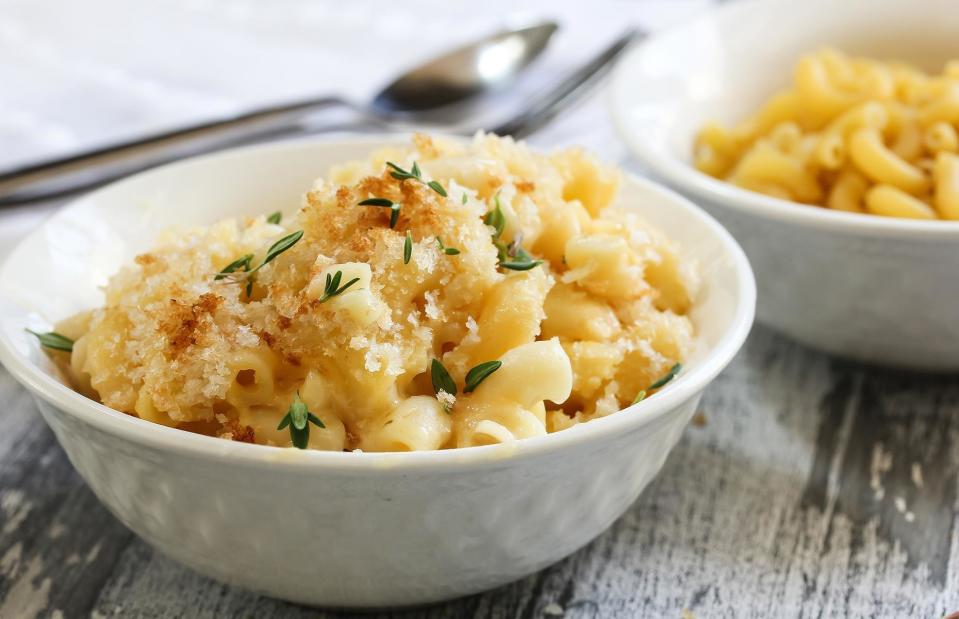
vm2002/Shutterstock
Most macaroni cheese dishes benefit from being made with a blend of cheeses, meaning this dish is the perfect destination for the various half-eaten tubs and nubs of cheese in your fridge. Just use whatever you have on hand to make a rich and flavour-packed cheese sauce that everyone will love. A tasty mix of cheeses is also ideal in a warming cauliflower cheese, potato gratin or even a fondue.
Chickpea water
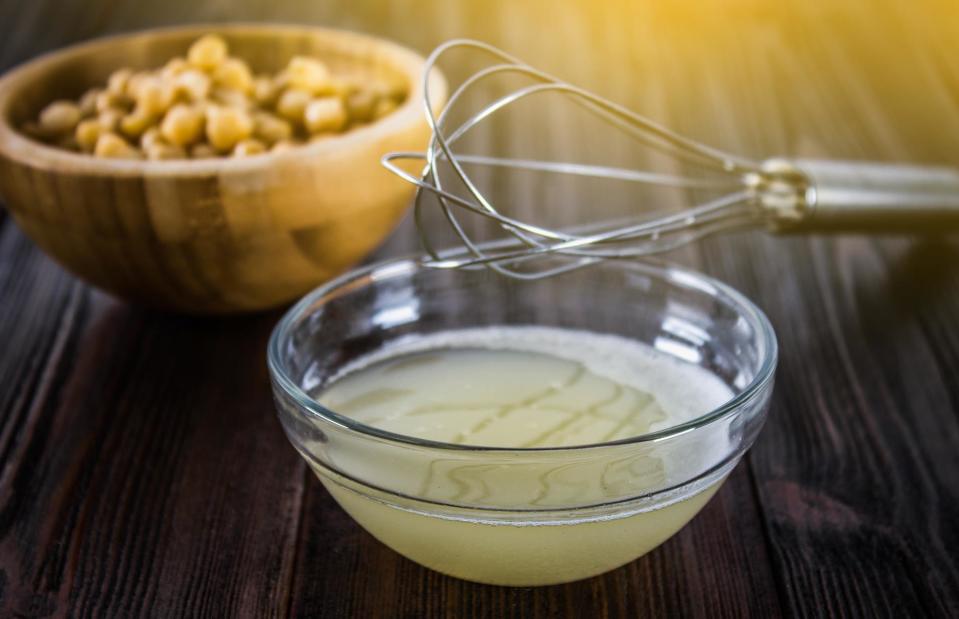
Olya Detry/Shutterstock
You've probably poured the viscous liquid leftover from draining cans of chickpeas down the sink without a second thought, but aquafaba, as it's also known, is actually a key ingredient in vegan cooking – due to its proteins and starches, it acts as a brilliant alternative to eggs.
Chickpea water
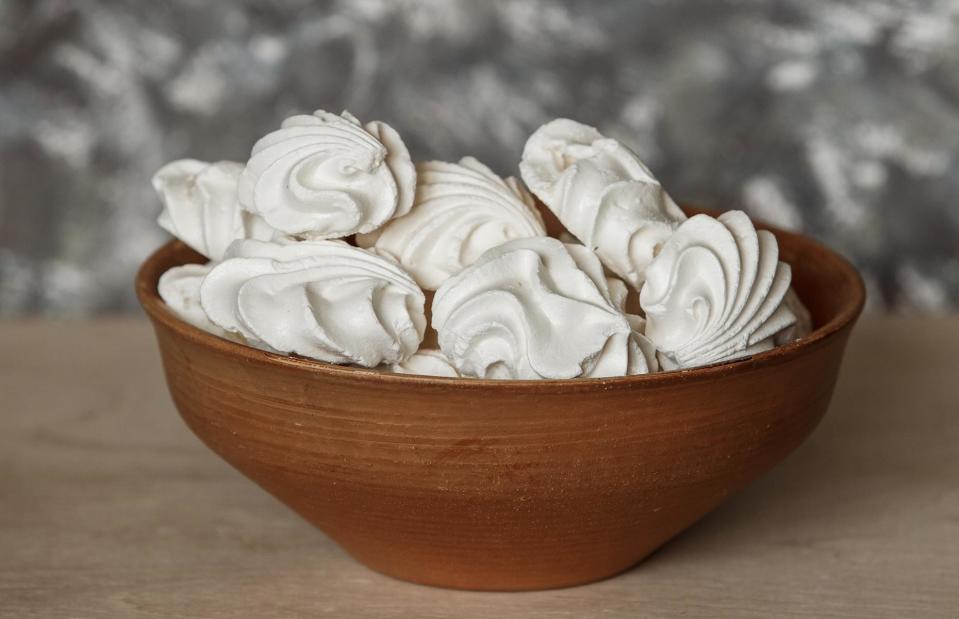
Iren Moroz/Shutterstock
This budget-friendly ingredient tends to work best in baking; three tablespoons of liquid from a can of chickpeas will replace an egg effectively in most recipes. To make delicious vegan meringues, beat the drained liquid from a standard can of chickpeas together with 3.5oz (100g) golden caster sugar until light and fluffy. Spread out in small circle-shapes on a baking tray lined with baking paper and cook for just over an hour at 110ºC/230ºF/gas mark 1/4. Once the meringues are ready, leave them to cool in the oven.
Clementines
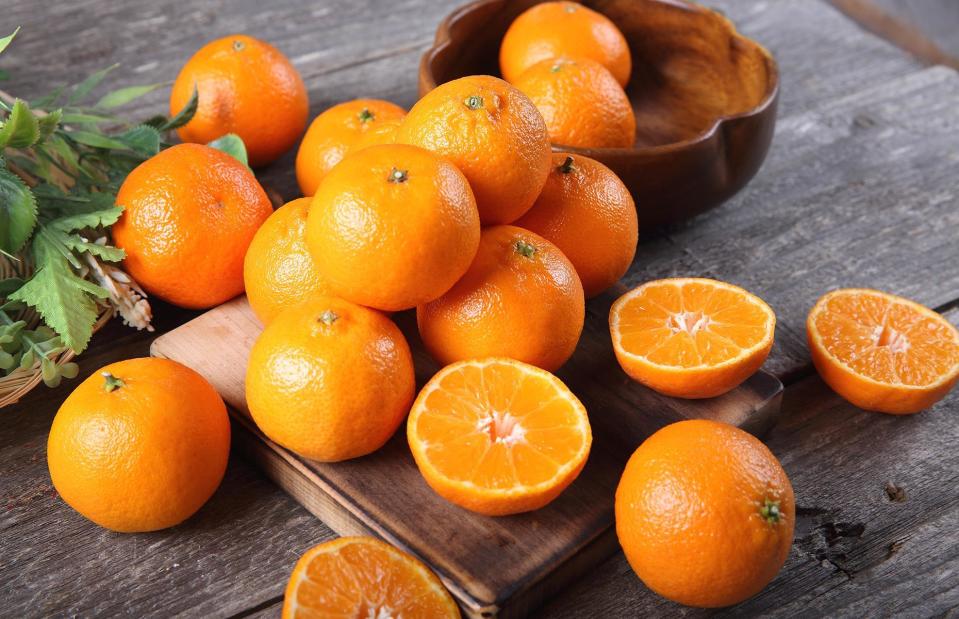
Nadia Yong/Shutterstock
Sweet and juicy, with easy-to-peel skin, these little citrus fruits are a real crowd-pleaser, meaning many of us have them in the fruit bowl. However, clementines and tangerines are very fickle – sometimes they last forever and on other occasions they turn sour, go soft or mouldy within days. If you spot that your clementines are on the turn, there's no need to throw them away though.
Clementines
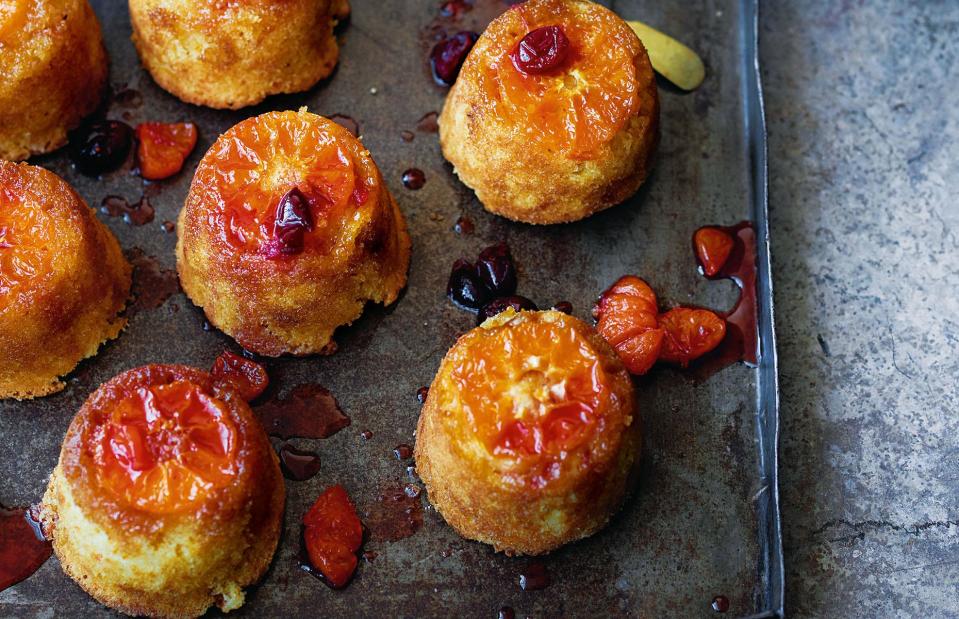
The Borough Market Cookbook/Hodder & Stoughton
Soft clementines will work just fine in sponges or cakes and you can also use the juice and zest to infuse icing or buttercream with citrus flavour. Another great option is turning the tasty fruits into a sweet syrup that can be drizzled over ice cream, pancakes or waffles. To make it, simply combine tangerine or clementine juice and zest in a saucepan with an equal quantity of sugar. Bring to a boil over medium heat, stirring until the sugar dissolves, then reduce the heat and simmer for 10-15 minutes, until thickened. Leave to cool, pour into a sealed container and store in the fridge.
Corn on the cob
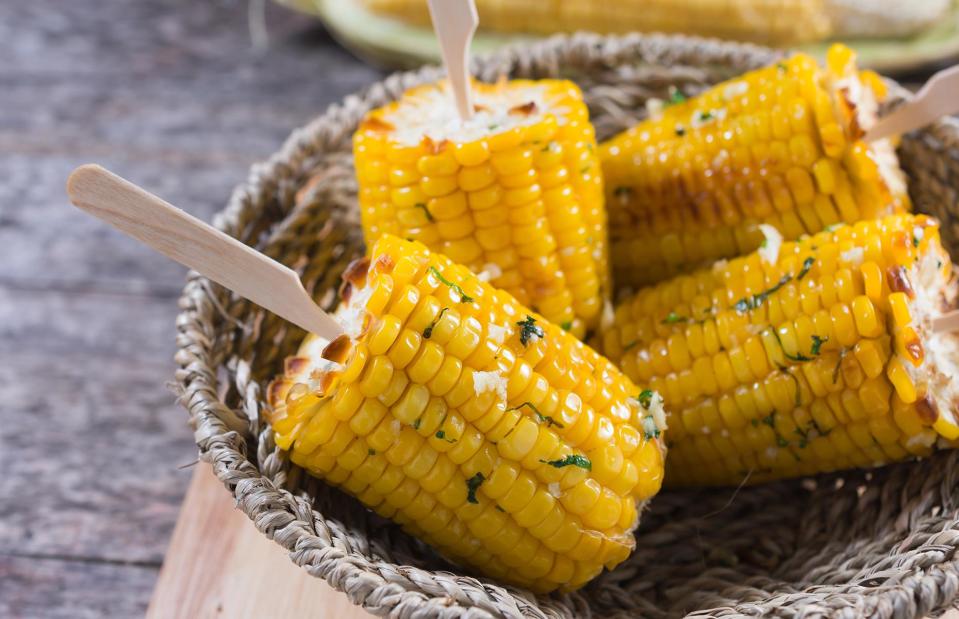
kolokoso/Shutterstock
Whether you like it steamed and smothered in butter or grilled with punchy spices, corn on the cob is a summertime staple for many of us. A perfectly golden ear of corn is a beautiful thing, yet just one or two spoiled kernels can ruin the visual appeal. But whatever you do, don't bin the whole cob – the rest will still be juicy and sweet.
Corn on the cob
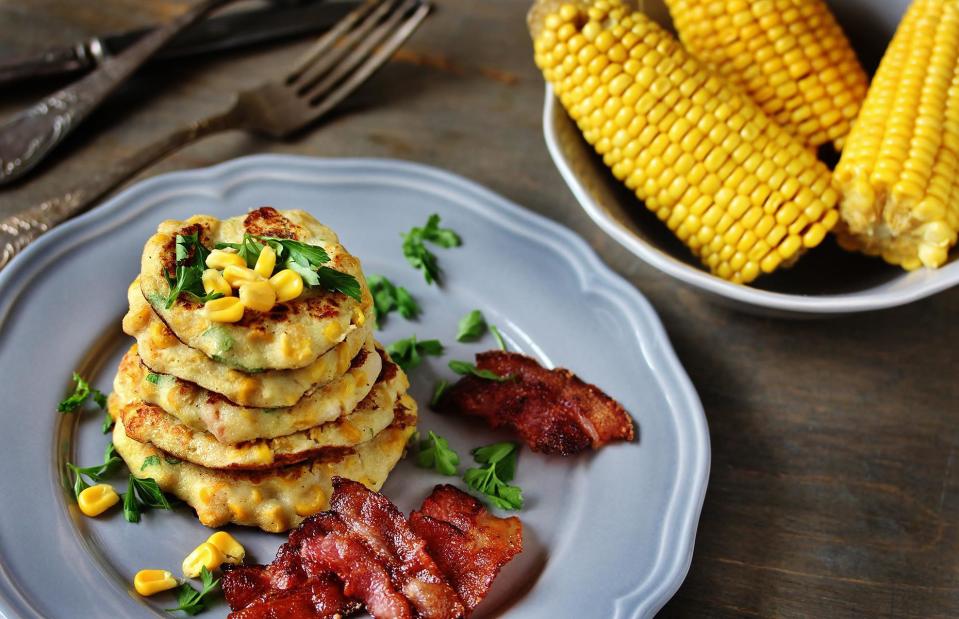
Lyudmila Mikhailovskaya/Shutterstock
Flavoursome, light fritters use corn cut from the cob, so you can discard any kernels that are past their best and just use the rest. Top your fritters with poached eggs and smoked salmon for the perfect brunch dish. Fresh corn is also delicious in a punchy, zingy salsa made with red onion, tomatoes, red chilli, lime and coriander. Got kernels that are a bit too dry to eat fresh? Add them to a soup or chowder.
Courgettes

effective stock photos/Shutterstock
Sometimes it can feel like green vegetables lose their vibrancy and crunch the moment you put them in the fridge – courgettes are one of the worst culprits here. They have a high water content, meaning that once they dry out, they’re much less appealing. While this makes them poor candidates for steaming, there's plenty more you can do with courgettes that have passed their prime.
Courgettes
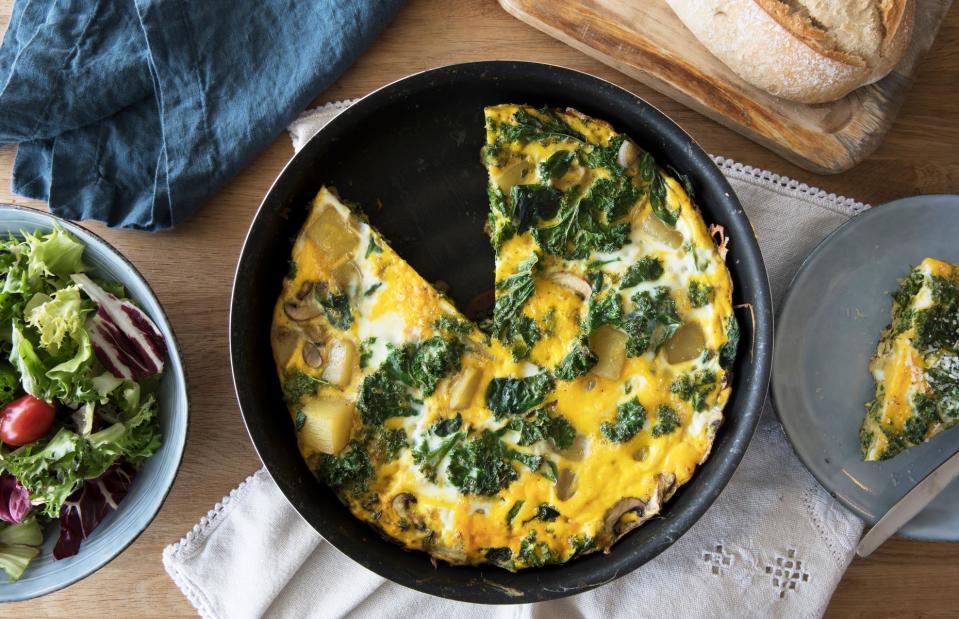
Charlotte Lake/Shutterstock
For a seriously tasty frittata, add lemon juice–drizzled courgette slices to the egg and potato base. Alternatively, make a quick courgette pickle or an old-school chutney that will still taste fantastic a few months later. You could also always give courgette fries a whirl.
Lemons
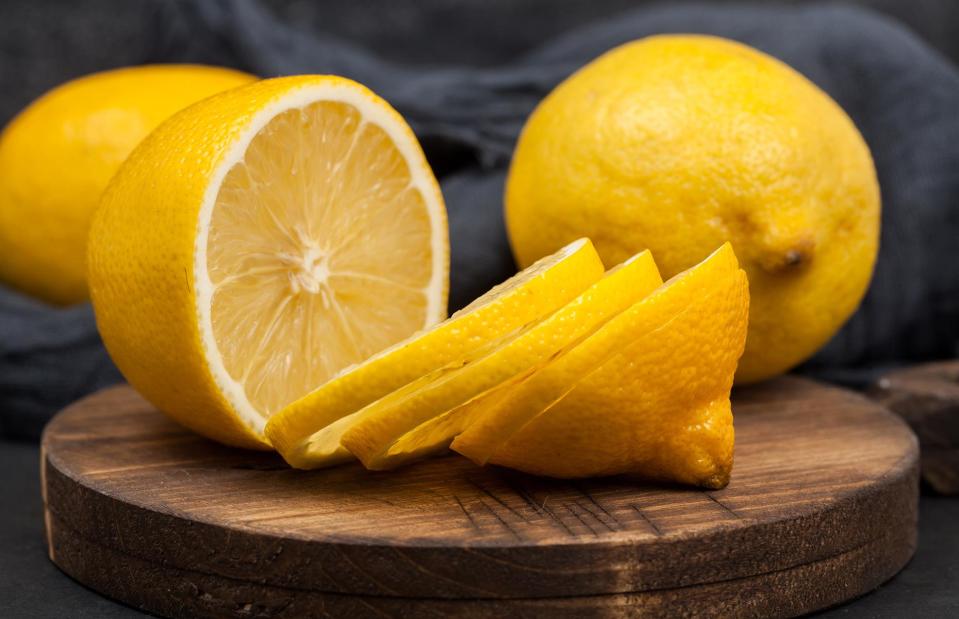
Alexeysun/Shutterstock
What would we do without lemons? These tart citrus fruits can be used to round out both sweet and savoury dishes, but like any ingredient, they have a shelf life. And once they start to go, there's no way of rescuing them. Rather than throwing overripe or dried-out lemons away, use the zest and remaining juice carefully.
Lemons
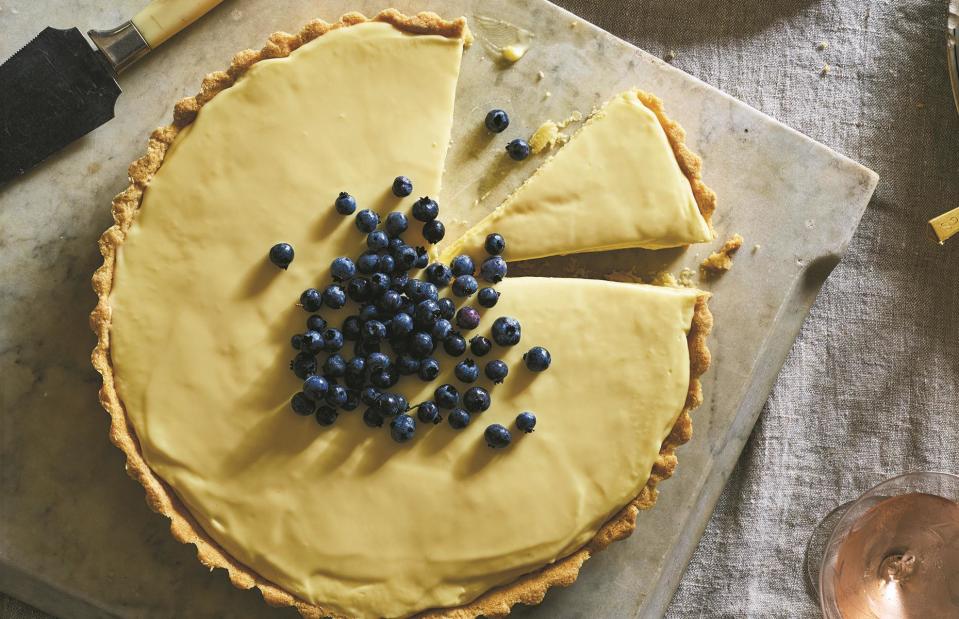
Food52 Genius Desserts/Ten Speed Press
If you have lemons that are on the verge of going bad, but still have a bit of juice left in them, squeeze as much as you can out and freeze in ice cube trays until needed. Or get baking: both classic French lemon tart and traditional English lemon drizzle cake use lemon zest and juice.
Milk
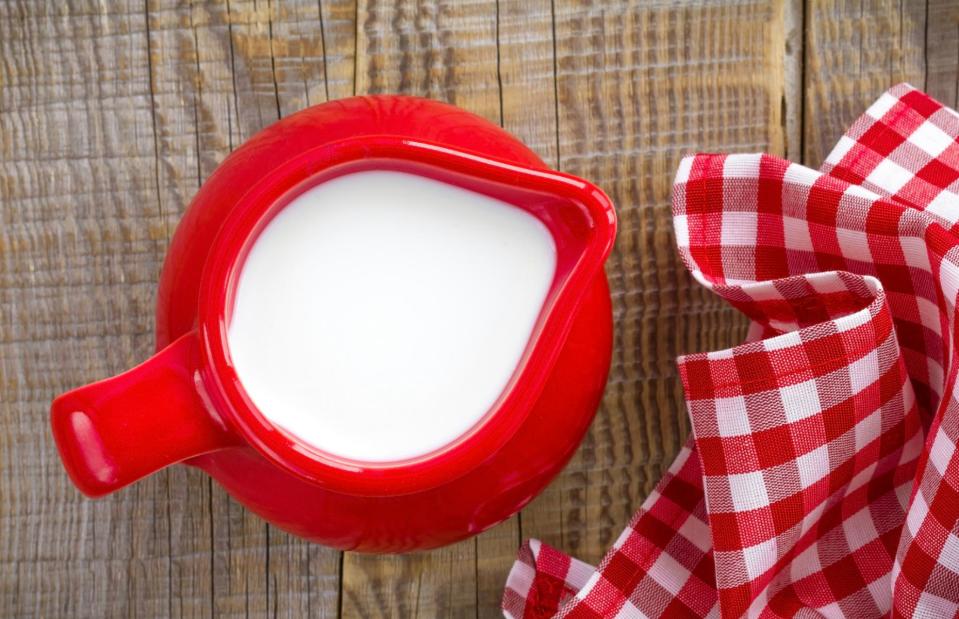
Sea Wave/Shutterstock
There’s nothing more annoying than pulling a carton of milk out of the fridge and realising it’s off. If your milk has gone sour, don't despair: it might not be good for pouring over cereal or adding to your cup of tea, but there are plenty of other ways to make use of it. You’ll know when milk is sour but still useable as it may have a slight odour, but won't be lumpy or curdled.
Milk

sNogGy/Shutterstock
English scones aren't quite the same as American biscuits, but they do have one thing in common: they both work well made with slightly sour milk, as it helps give them a light, fluffy texture. Scones are also one of the easiest bakes you can make. Mix 8oz (225g) self-raising flour, 1 tsp baking powder and a pinch of salt in a bowl. Rub in 2oz (55g) cold butter until crumbly. Stir in 1oz (25g) sugar, then pour in 5oz (150ml) slightly sour milk to form a dough. Roll out, cut into rounds and bake for 12 minutes in an oven preheated to 220°C/200°C fan/425°F/gas mark 7.
Mushrooms
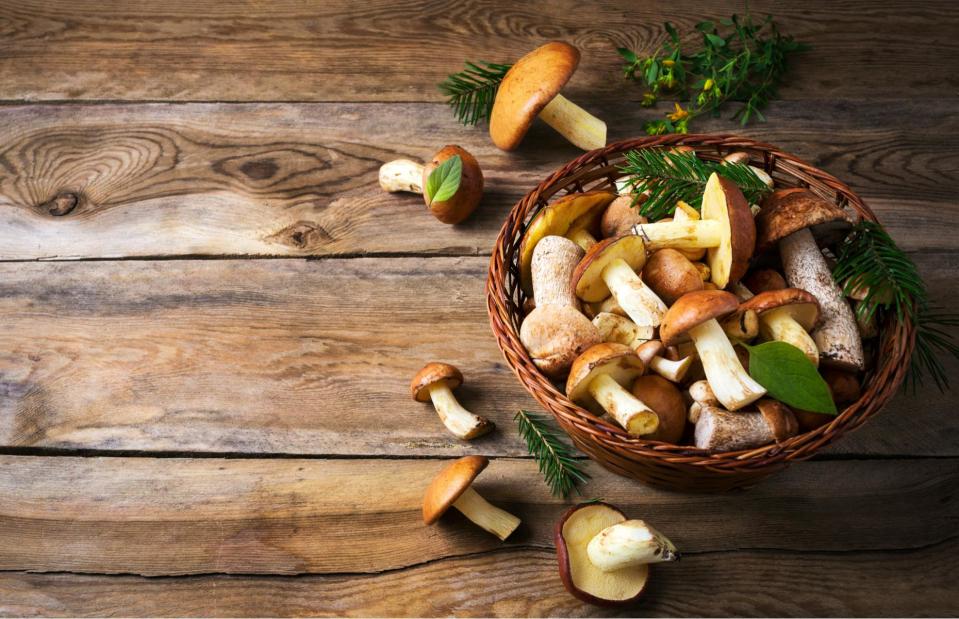
TasiPas/Shutterstock
Mushrooms typically last pretty well, but it's crucial you avoid storing them in plastic or they'll sweat (a paper bag is your best bet). If they dry out a little, that's not a problem – slightly dehydrated mushrooms are absolutely fine to eat. If they’ve gone wet and slimy though, it's probably best to consign them to the compost.
Mushrooms
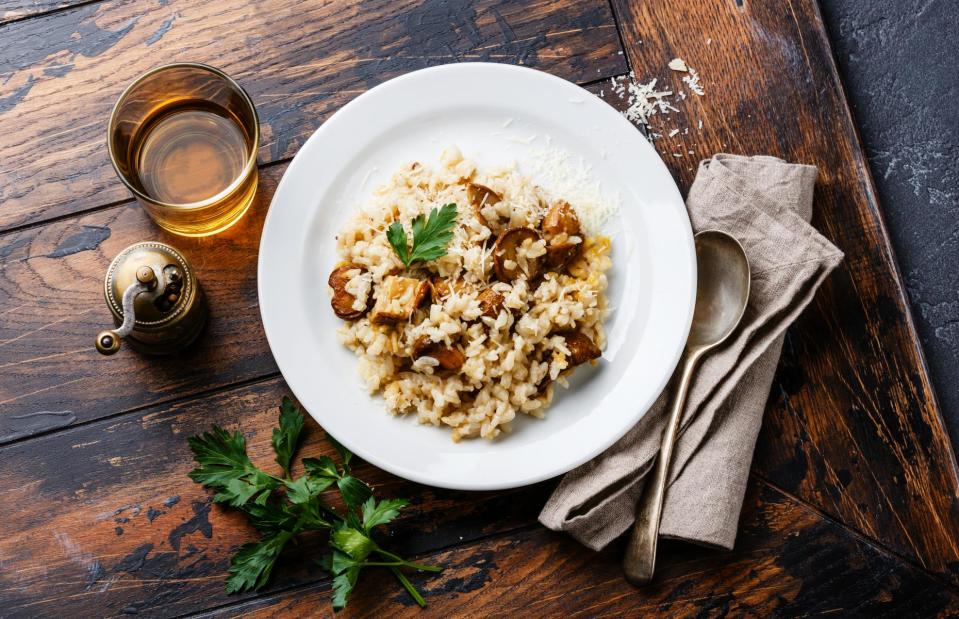
Lisovskaya Natali/Shutterstock
A simple Parmesan and sage risotto is the ideal dish for using up less-than-perfect mushrooms. The richness of the cheese and the earthiness of the herb pair perfectly with mushrooms and will give them a new lease of life. You could also try the same flavour combination with a creamy pasta dish. For mushrooms that are really dried out, chop finely and mix with cream cheese, garlic and herbs to make a delicious stuffing for chicken.
Rice
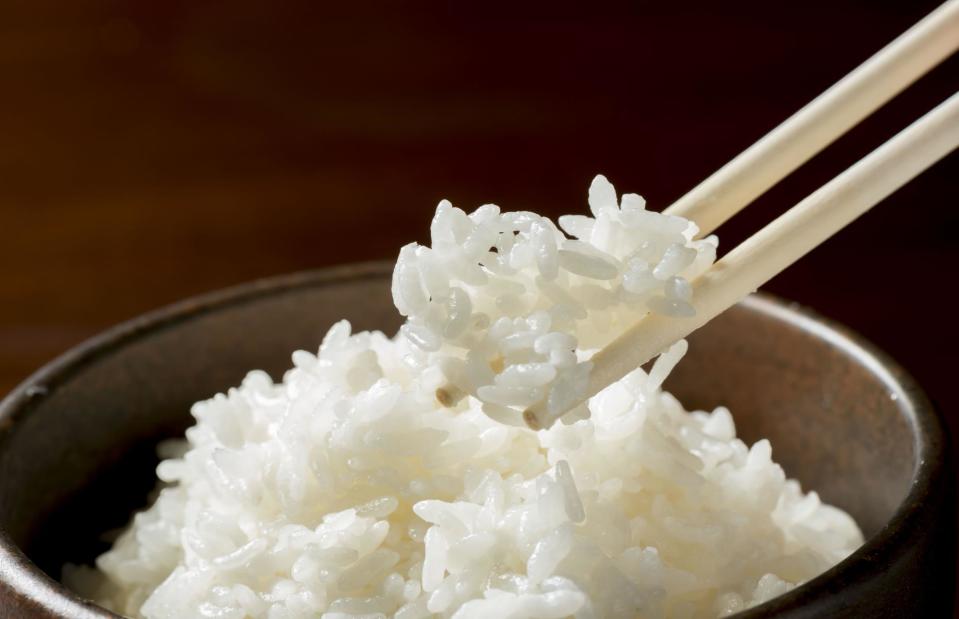
Kei Shooting/Shutterstock
Even when you think you’ve measured out the perfect quantity of rice for your meal, there always seems to be either too much or too little. If you find yourself with extra rice, experts recommend eating it as soon as possible because bacteria can build up quickly. Luckily, there are plenty of recipes where pre-cooked rice is actually essential.
Rice
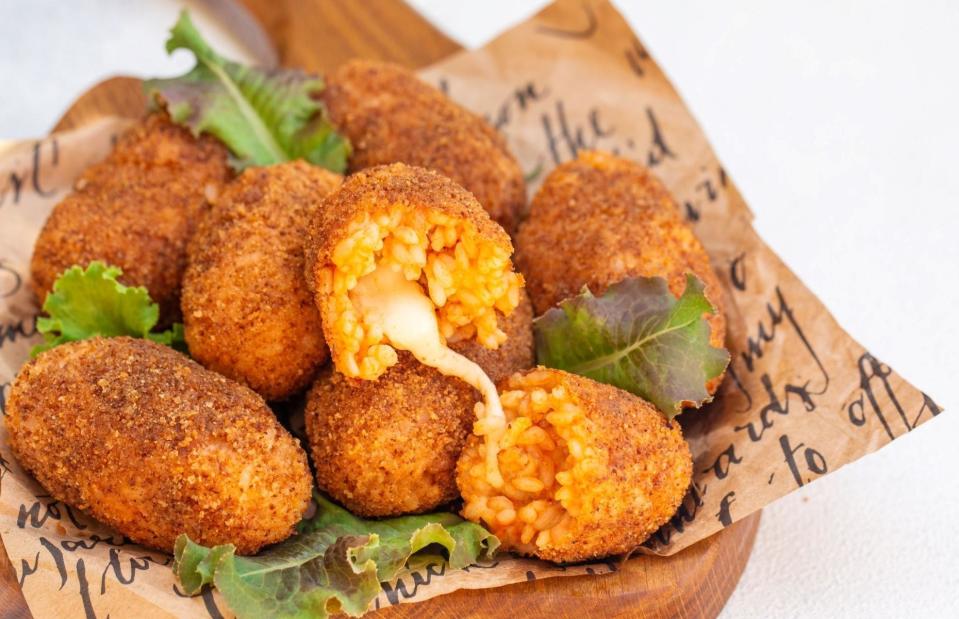
OlgaBombologna/Shutterstock
The secret to perfect fried rice is to use rice that was cooked the day before. Converts say it stays crispier and takes on more flavour. The same goes for arancini; to make these crispy-on-the-outside, cheesy-on-the-inside Italian rice balls, mix cooked rice with grated Parmesan cheese and season to taste (you could add crispy bacon, tomato or fried mushrooms to the mix). Then, take a small portion of rice and flatten it in the palm of your hand, place a piece of diced mozzarella in the centre and roll into a ball. Dip each ball in beaten egg, then roll in breadcrumbs to coat. Shallow fry in hot oil until golden brown and crispy.
Root vegetables
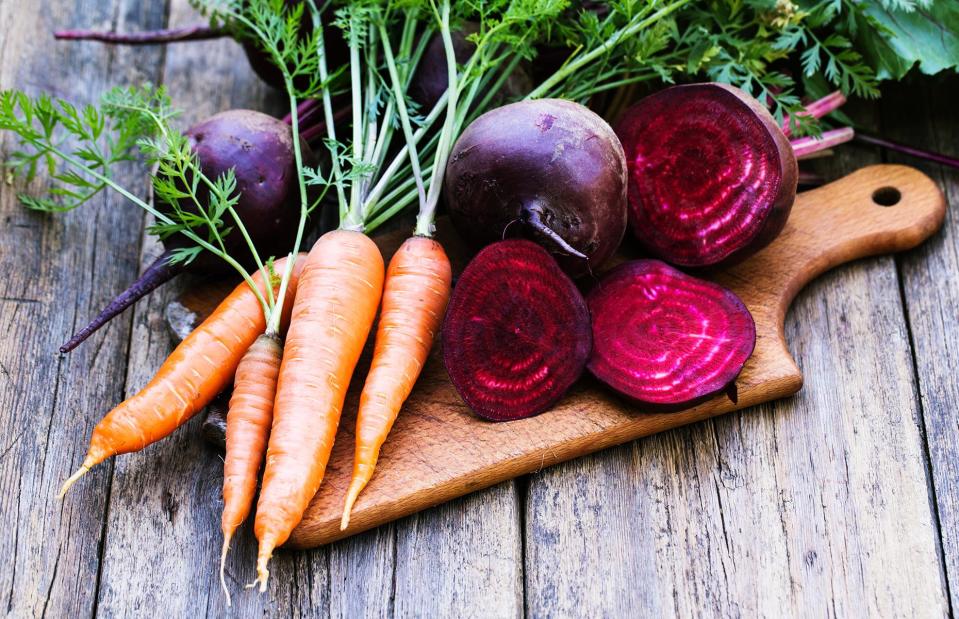
Ollinka/Shutterstock
Kitchen staples for many families, root vegetables like potatoes, beetroot and carrots are notoriously hardy, so will usually last in the store cupboard or fridge for quite some time. Even when they’ve gone a bit limp and soft they’re completely fine to eat, just make sure there are no brown or mouldy bits inside.
Root vegetables
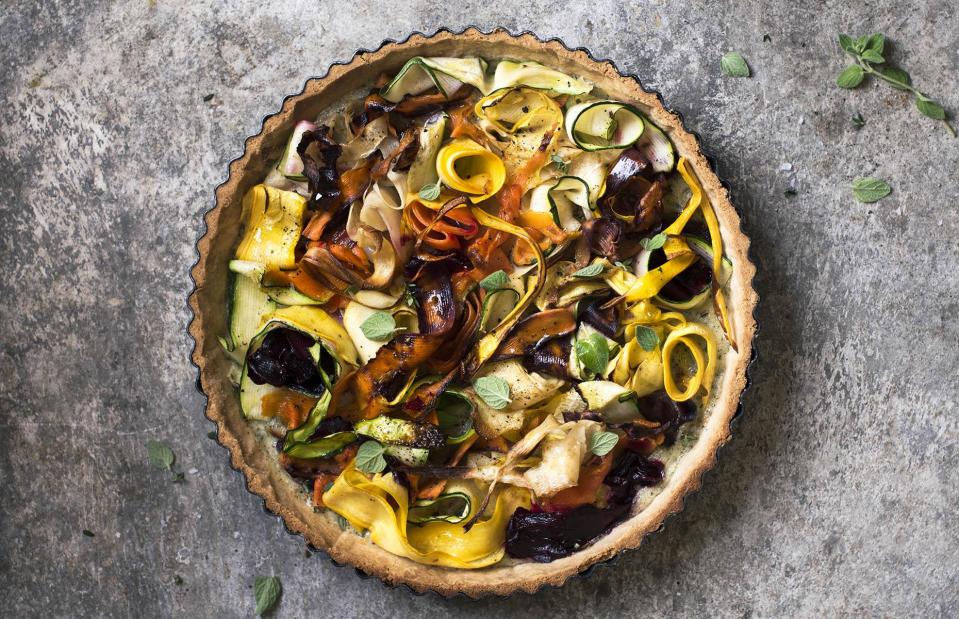
The Hidden Hut/Harper Collins
An easy way to use up limp potatoes, beetroot and carrots is chopping them up and using them to bulk out stews, soups and curries – once cooked, you’ll barely notice the difference. Or, for something more creative, make vegetable crisps: slice or peel old vegetables into thin ribbons, toss with olive oil, season with salt and black pepper and bake in a hot oven until crunchy.
Spinach
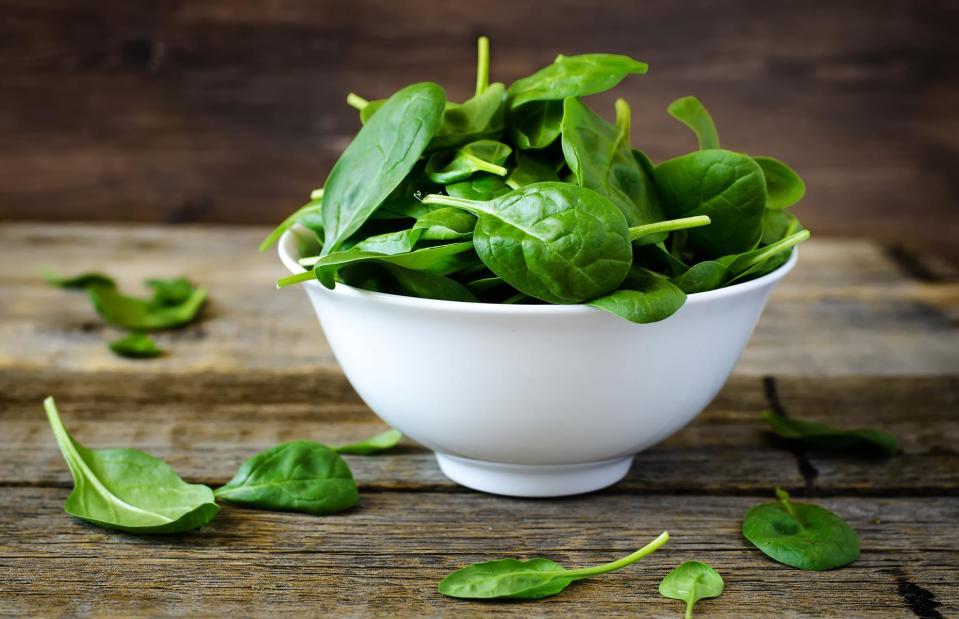
Nataliya Arzamasova/Shutterstock
Similar to both watercress and rocket, spinach tends to go soggy and soft once it's spent a couple of days in the fridge. If some of the leaves in your bag of spinach have gone slimy, don't throw the lot away. Instead, pick out the fresher-looking leaves and get rid of the rest.
Spinach
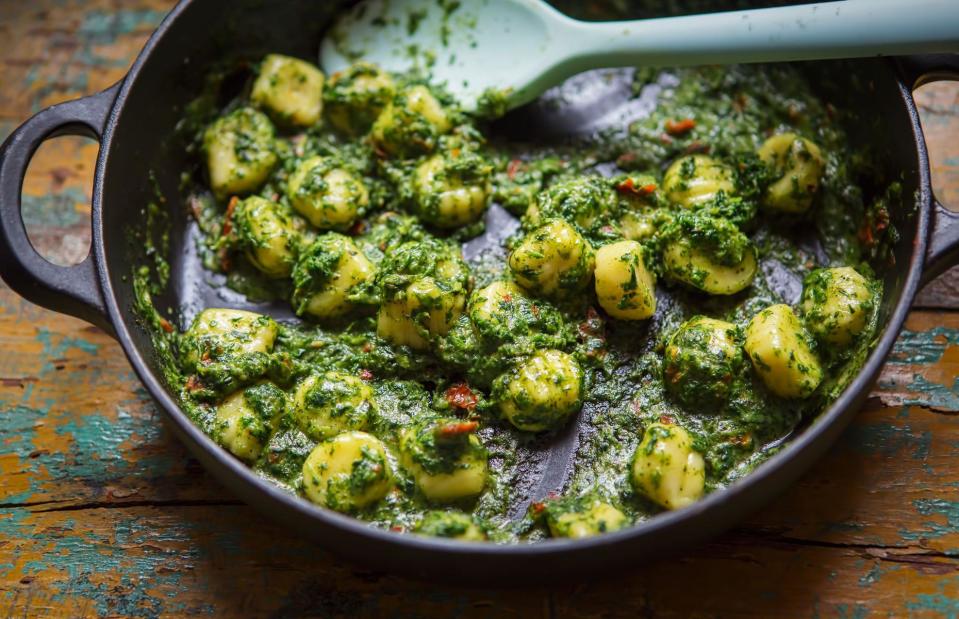
Bartosz Luczak/Shutterstock
The leftover leaves can be chopped and added to omelettes, breakfast muffins or even tender, buttery little gnudi (Italian ricotta-based dumplings). Keeping with the Italian theme, spinach is also really handy for bulking out (and adding extra goodness to) homemade pesto. Just add a handful to the blender at the same time as you add the basil.
Strawberries
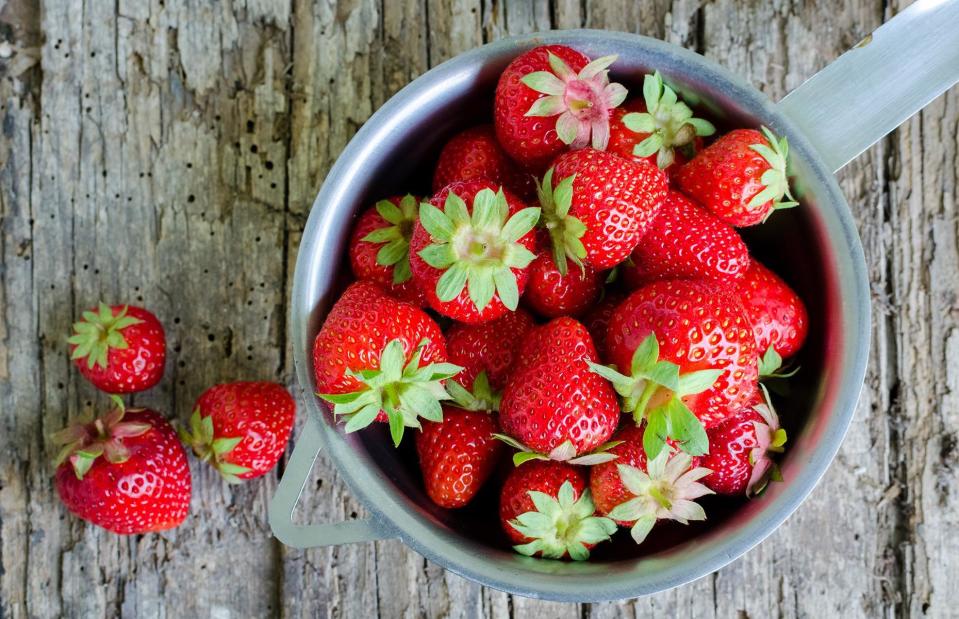
Nelli Syrotynska/Shutterstock
Sweet, fragrant and popular with children and adults alike, strawberries are a fridge staple for many of us during the summer months, but they’re a notoriously difficult fruit to keep fresh for long. If a few individual berries have gone a bit soft, or are bruised but haven't gone mouldy yet, they can still be frozen for the future or used up in a number of ways.
Strawberries
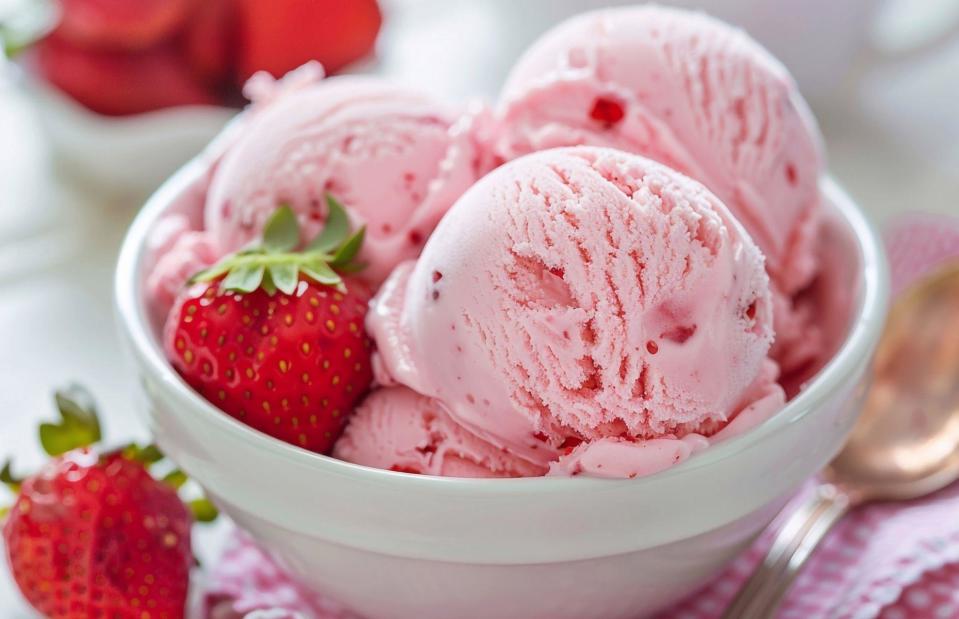
meha71/Shutterstock
Adding strawberries to smoothies is the obvious move, but for something a bit more indulgent why not try an easy no-churn ice cream? To make, blend 7oz (200g) strawberries until smooth. Next whip 17fl oz (500ml) double cream until stiff peaks form. In a bowl, combine the strawberry purée with a 7oz (200g) tin of sweetened condensed milk and 1 tsp vanilla extract. Fold in the whipped cream until smooth. Pour into a container, cover, and freeze for at least six hours, or until firm. Once you’ve got your basic recipe down, you can experiment with new flavours by adding extra fruits or even crumbled shortbread, to make strawberry shortcake ice cream.
Sweet potatoes
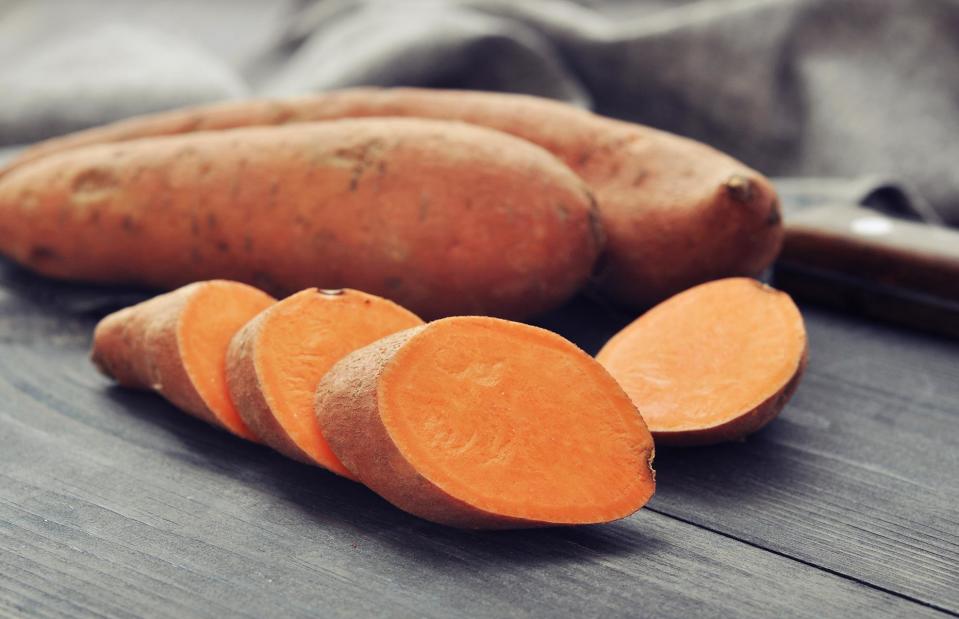
mama_mia/Shutterstock
Sweet potatoes are thrifty, versatile and can be used in so many ways, from curries to salads, soups and more. They last for ages when stored in a cool dry place but from time to time, you might still find yourself with soft and rubbery sweet potatoes. The good news is that unless there are visible spots of mould inside or out, they're still perfectly edible.
Sweet potatoes
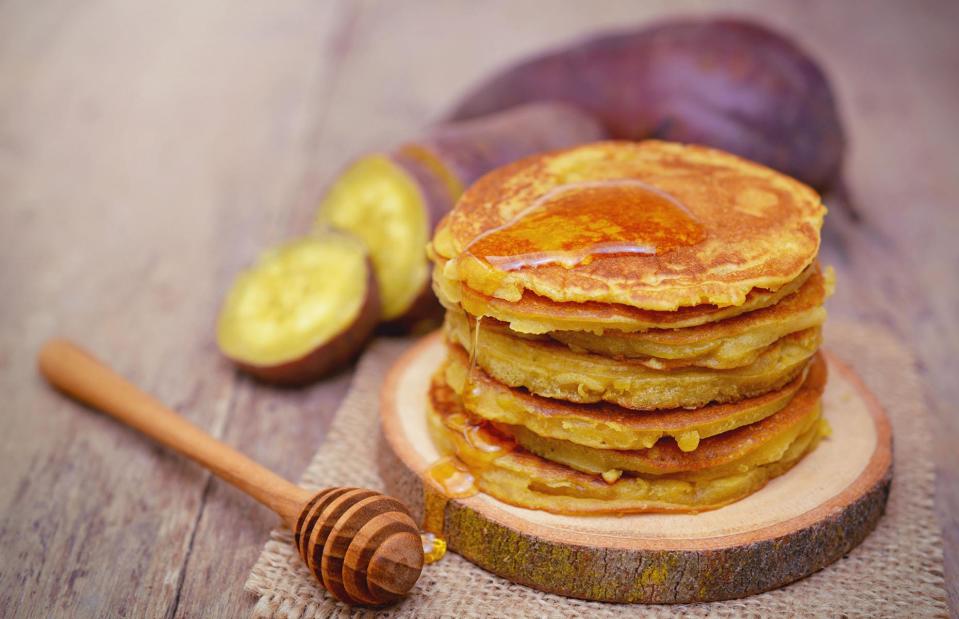
Mamsizz/Shutterstock
The uses for slightly soft sweet potatoes are endless – boil until tender and mash the sweet flesh with butter and lots of seasoning, or blitz them into a warming soup with chilli and coconut milk. You can even use sweet potatoes to make delicious pancakes. For a simple recipe that the whole family will love, mix two eggs for every 2oz (56g) cooked sweet potato flesh. You can then sweeten the dough with a little sugar and vanilla. Fry spoonfuls of the mix in butter for two to three minutes on each side, then drizzle with syrup to serve.
Tomatoes
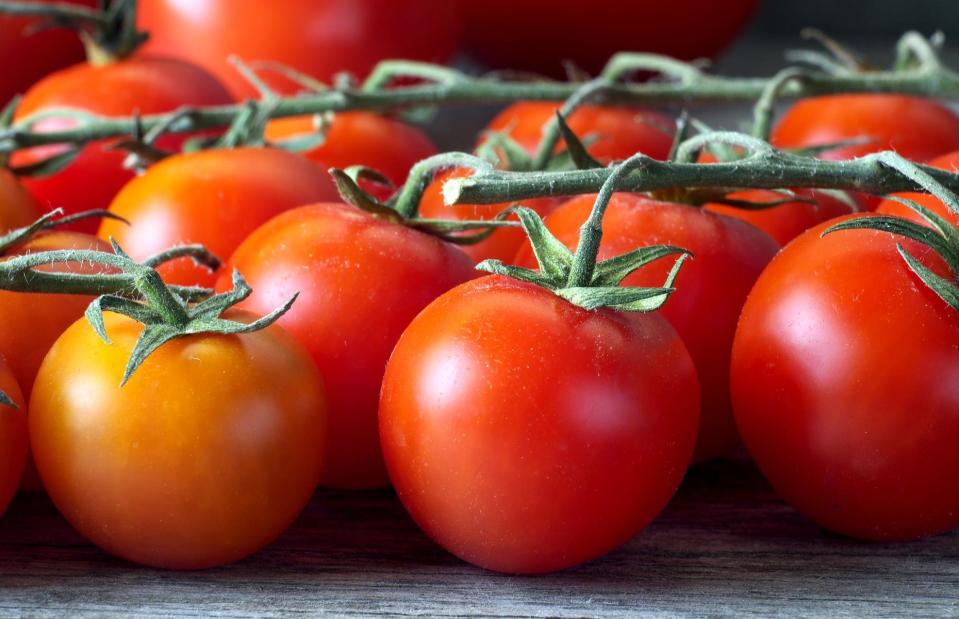
asadykov/Shutterstock
Whether they’ve been left on the vine too long and split, somehow got crushed in the fridge, or have just gone soft, mushy tomatoes probably aren’t going to taste great in a salad. Happily, though, cooking them will bring them back to their former glory.
Tomatoes
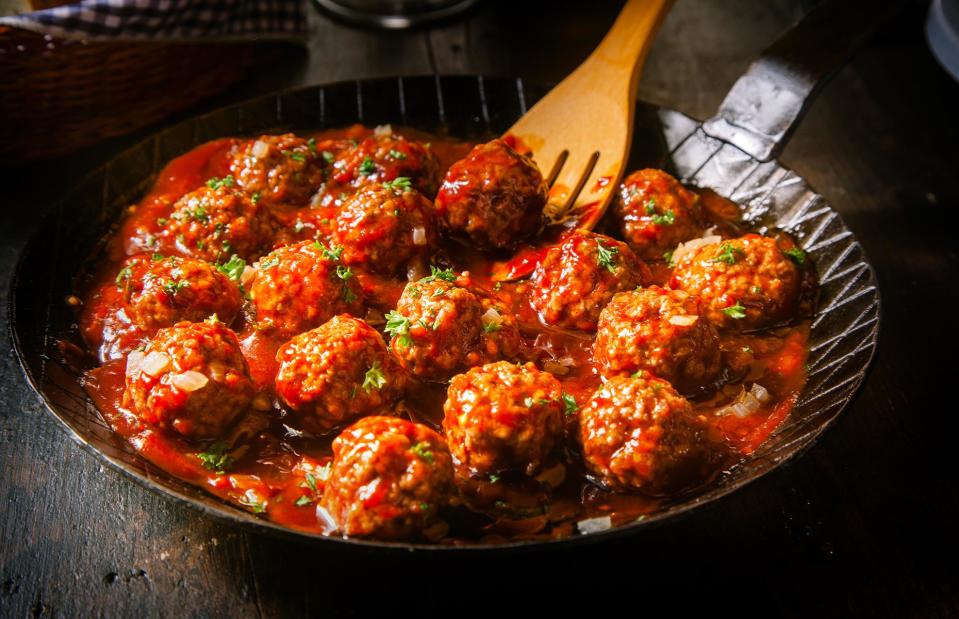
stockcreations/Shutterstock
One of the best – and tastiest – ways to use up overripe tomatoes is in a beautiful slow-cooked sauce flavoured with garlic, onions, olive oil and fresh herbs. Cook your ingredients slow and low with plenty of stock and the end result will have a rich, almost jammy flavour. The sauce can be smothered over pasta as it is, or you can add homemade meatballs for a real feast. It also makes a great topping for pizzas. Be sure to freeze any sauce you don’t use, ready for future meals.
Tortillas
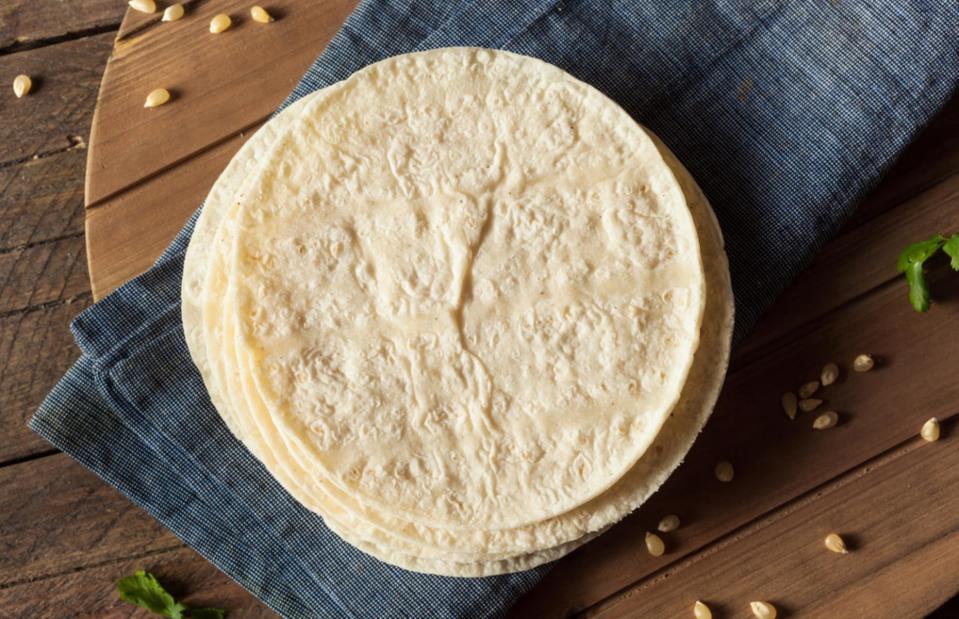
Brent Hofacker/Shutterstock
These versatile wraps are a kitchen staple for many of us, ideal for a quick lunch or served with chilli, guacamole and all the trimmings for a delicious Mexican feast. However, we find there are often a few tortillas left over – and they tend to dry out quickly once the packet is opened. But, just like a standard loaf of bread, provided they’re not showing signs of mould, they can still be put to tasty use.
Tortillas
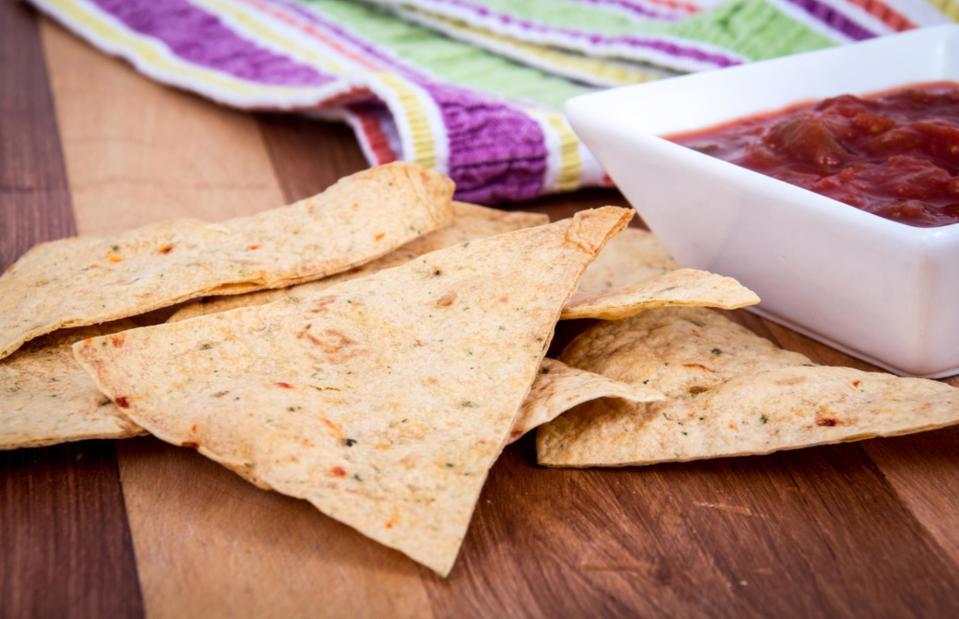
julie deshaies/Shutterstock
Homemade tortilla chips are really easy to make. Simply cut soft tortillas into triangles, drizzle with a little olive oil, season with salt and any spices you like and bake in a hot oven for around 10 minutes, turning halfway. Serve as accompaniment to chilli con carne, use to finish soups or salads or load with cheese, salsa and guacamole for the ultimate homemade nachos.
Watercress
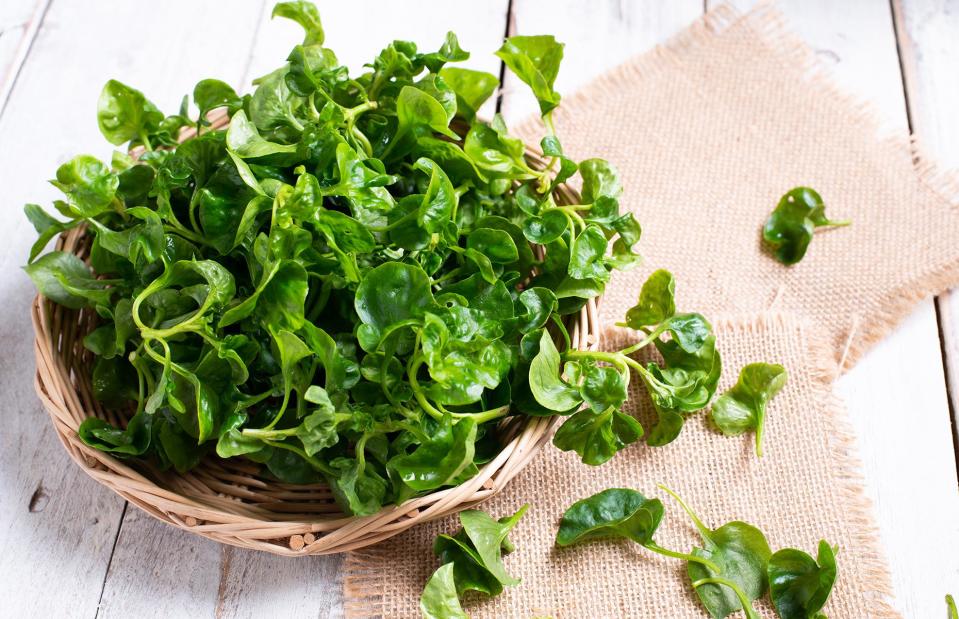
Regreto/Shutterstock
With its deep green leaves, peppery flavour and crisp, crunchy texture, watercress has real bite and is perfect for pepping up salads. But like most delicate leaves, it will quickly turn slimy if not used within a couple of days of purchase. Once they're past their best, these tasty leaves won't work in a salad but that doesn't mean they should be thrown away.
Watercress

Too Good To Waste/Watkins Media
A forgotten bag of watercress makes a great addition to soup. Try adding a handful to Asian-style broths – once the leaves have wilted down, you won’t notice that they’re past their best – or make classic watercress and potato soup. This lovely leaf is also great for adding a bit of punchy flavour to homemade mayonnaise, pesto or even mashed potatoes.


